Self-love and self-compassion are requisites for nurturing self-esteem.
There are many ways to bring more self-love and self-compassion into your life. The good news is that many of these practices are fairly easy to integrate into your usual routine.
But even strategies that do involve a change to your daily routine promise to deliver higher rewards for your effort.
Below, we’ve listed 12 self-love and self-compassion strategies you should try to develop self-esteem.
Self-criticism can cause you to have a self-defeating view of yourself. Even if you’re only programmed to feel unloveable and unworthy on a subconscious level, consciously criticising yourself is a signature tune of wounded archetypes that need to develop self-love.
Try to be mindful of how you speak to yourself. Make a note of the times that you use words like stupid, idiot, failure, pathetic, loser, douchebag…you get the idea.

When you catch self-criticism, reverse it. Say, no that’s not true, you’re actually successful, brilliant, smart, clever, loveable etc. And if you have experiences that you can draw on to validate why you are successful, brilliant etc, give yourself a gentle reminder of that.
Actually, no, fuck it, don’t be gentle, reel all your best qualities off to your heart’s content.
People who lack self-love typically have a subconscious program that they will be rejected, abandoned, failed or disappointed in some way. When you feel like this, you may not bother trying.
If your epithet is “What’s the point”, change your tune. The point is that you can achieve anything you set your mind to if you are capable of developing the skills, knowledge and personality.
Of course, you have to be realistic when you’re setting goals, but you have a habit of setting a low bar — because you’re too afraid to fail — you’re denying yourself opportunities.
When you are courageous and chase opportunities you are perfectly capable of achieving, you learn to love and respect yourself more than if you hold yourself back and pick low-hanging fruit.
If you need to nurture self-love, grab opportunities with both hands. When you succeed, you learn to trust yourself, and thus grow beyond the Hero into the Warrior. And if you fail, learn from your mistakes, be compassionate with yourself then keep trying until you succeed.
How you view yourself has a significant impact on how you experience life. Your self-worth influences the decisions you make, how you nurture and maintain relationships, which opportunities you pursue (or don’t) and your overall emotional well-being.
A lack of self-esteem can also make you do things you don’t really want to do but do them anyway — because you don’t want to be rejected. You want to be liked and fit in.
Subsequently, you may do something that is degrading, embarrassing, risky or foolish. If you do anything you later regret, you’re feeding self-hate and neglecting self-love.
It can often be the case with people who lack self-love to hide what they think and feel. In particular, you won’t ask people for help when you need it and you won’t talk about your problems because you feel guilty unbridling your burdens onto somebody else.
Studies show that bottling up emotions can lead to mental and physical health issues. It’s important to speak about how you feel, and contrary to what you may believe, opening up and making yourself vulnerable will more often than not strengthen your relationships.
So the next time you need more emotional or physical support, don’t soldier on or repress your emotions. Ask for help. People are usually willing to help if they have the time, energy and resources.
It’s no secret that engaging in activities that stoke your passion makes you feel happy and energised. You know that from personal experience. The issue for most of us is that we don’t have enough time to do the things we love.
Yup, work gets in the way of life, but so too does the life you are living that you are not enjoying. If you’re feeling miserable and spend your spare time watching TV all night, the chances are that watching TV is not pulling your passion chord.

In short, stop wasting time doing shit that does not serve your best interests. You can measure whether something is nurturing your self-love or not by how you feel afterwards.
So ask yourself whether the time you spent on something is worthwhile. If it is, keep doing it. If it’s not, stop doing it and find something worthwhile to do instead.
There are also solutions on the job front. If you hate your job, or at the very least, no longer feel satisfied with the profession you have pursued, you should probably find a job that you can enjoy more.
The rule of thumb here is not to simply switch companies within the same profession otherwise you will find yourself with the same level of dissatisfaction upstream.
Your new job should be something that you are passionate about. Alternatively, start your own business. If you have your own venture, your business becomes your passion even if you are still working in your field of expertise. But ideally, your new business should be focused on something you are passionate about.
When you feel as though you don’t fit in, you’re spending your time with people who do not share your interests, mindset or worldview. This feeling can hack away your self-esteem and breed hate.
And hate can become self-hate, and self-hate becomes anger, frustration and potential violence. Feelings of hate never end well.
On the flip side, when you hang around with like-minded people, you feel accepted, appreciated and loved. You’re able to converse about things you enjoy speaking about and do things you are passionate about. Whilst you are doing all this, you’re building deep and meaningful relationships. Meaningful relationships are so important for developing self-love.
The first point to note here is that your priorities are your responsibilities. The second point to note is that having some form of responsibility should be a priority.
When you are responsible for something or someone, it naturally becomes a priority. However, if you lack self-love, you may be prone to forgetting about your responsibilities.
Sure, you will make sure your children are fed and clothed, but are you giving them the emotional nourishment a child needs as well? That is a responsibility and should be a priority. You feel good when you do good.

You also have a responsibility to care for the feelings and well-being of others. That doesn’t necessarily mean taking care of their responsibilities as well as your own, but by what you say to people, how you treat them, and how much you let them know that you care.
Taking up these responsibilities results in the minor heartwarming exchanges you have with shopkeepers and the person sitting next to you on the bus. It helps you to build relationships in the office and be well thought of as a ‘jolly nice chap’ or a ‘lovely lady.’
I’ll say it again, when you do good, you feel good. Feed your self-love.
When you lack self-love, you might not feel worthy and deserving. Consequently, you constantly need reassurance and validation from others and go out of your way to be a people-pleaser.
The issue with this way of being is that it eventually leads to burn-out, you pin yourself to the cross of martyrdom and you become filled with resentment. None of this is good for nurturing self-love.
Lurking underneath this way of being is a subconscious program that you don’t offer value to the world. But the reason for that is that you have never taken the time to observe all the good you do in the world and give yourself credit for it.
Test this. Write a list of all the things you do for people that bring them value. You will be gobsmacked. Mover, you will be left thinking, “Actually, I’m f**king brilliant!”
If I haven’t already mentioned hate, anger and resentment enough in this article, these anti-love emotions deserve a heading of their own. They’re so toxic for self-love.
Hate, anger and resentment typically surface in people who suffered some form of physical or emotional abuse in their past. When this happens in early childhood, the child can even turn hate, anger and resentment in on themselves.

Whilst these poisonous emotions are usually the result of one person or a few people when you were younger, as you pass through life, you direct the hate, anger and resentment you’re harbouring towards other people en masse.
Naturally, projecting hate, anger and resentment onto other people does nothing for your relationships, and your self-esteem takes a knock. It’s even difficult to love yourself when you keep having moments you hate yourself for afterwards.
To overcome these negative feelings, the only cure is to let go of the past. Forgive whoever for doing whatever to you and move on. You don’t have to drive over to their house and become best mates, just simply accept it happened and there is nothing you can do to change that.
What you can change is your future. But you will only change your future if you change your subconscious programs. And if hate, anger and resentment are causing negative experiences, they are programs you should be looking to upgrade if you want to install self-love.
Everyone needs to relax at some point. You also need to be rewarded with quality time spent for yourself. Taking time out for yourself doesn’t necessarily mean spending time by yourself. Solitude is great at times as well. The point is that you need to take care of yourself.
When you don’t take care of yourself, you’re at risk of becoming ill. And then you’re no use to anybody. So always set some time aside each week to make sure you have some time to recuperate from the stresses of life and show yourself some respect by taking care of yourself. This is self-love in action.
Apollo’s famous maxim (no his other one) — everything in moderation — is a highly effective strategy for nurturing self-love, especially if you’re also simultaneously moving away from destructive behaviours and trying to instil a new way of being.
For example, if you’re dieting, there can be a tendency to deprive yourself which is not good for developing self-love and compassion. But recognising there has to be a balance, enables you to reward yourself with your favourite treat.

The same rule applies if you’re working too much and neglecting quality time with your family or some other activity that nurtures self-love. If you keep in mind that balance is essential for life, you won’t feel guilty doing things for yourself rather than other people.
Self-love is not about being selfish, it’s about being sensible. Use YOUR time wisely.
Failure is a fact of life. Everybody fails at most things until they learn how to do it. But when you lack self-love, you can be hyper-critical and feel bad about yourself whenever you fail or make a mistake.
But there’s the real mistake right there. Rather than beating yourself up about it, accept that you didn’t get it right this time. Make peace with the fact that you are allowed to fail. You can always have another go.
Studies show that this lesson in self-compassion could actually help you to have more hits than misses in the future. When you practice self-compassion you respond to stressful situations with more flexibility and resilience. And when you’re not totally stressed out, you invariably perform better as well.
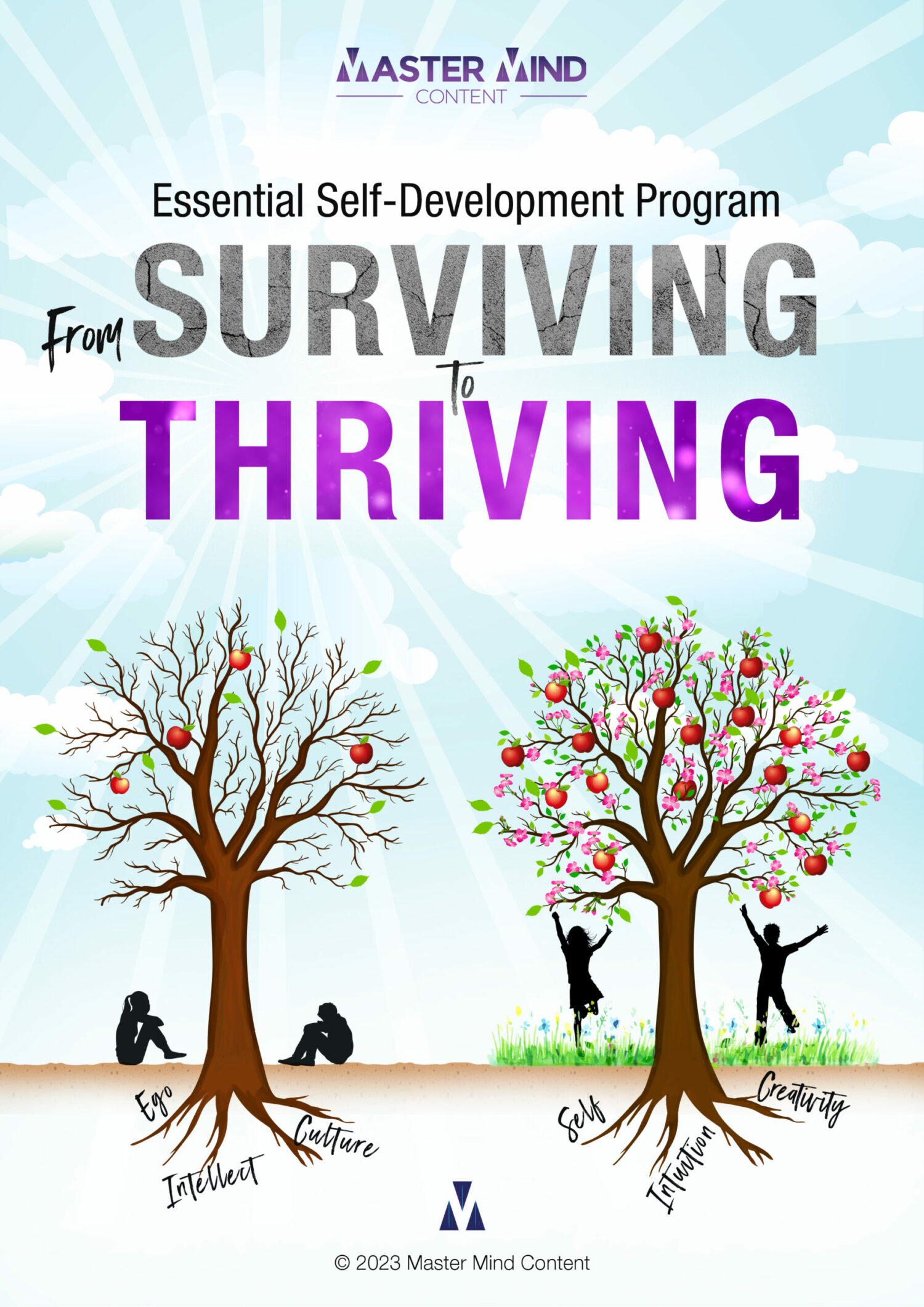
Although heavily influenced by his early tutor and confidante, Sigmund Freud, Jung’s model of the mind was more evolved than the Austrian’s. In my opinion, Jung’s model of the mind is easier to understand how unconscious content tries to make itself known to the conscious mind.
In brief, Jung felt that split-off fragments of consciousness create a complex in the individual. By observing complexes and one-sided attitudes, it is possible to find a solution and bring the individual to balance.
Jung also associated complexes with archetypes which he described as ‘psychic energies’ that act “like agents that tend towards the repetition of these same experiences.”
The archetypes are patterns of energy that take possession of the ego and prompt us into habitual behaviours. But also in repetitive patterns of life experiences such as self-sabotage, getting frustrated over little things, a desperate need for stimulation etc.
Thought-Provoking Quote
“I wanted to express the fact that one or other basic instinct, or complex of ideas, will invariably concentrate upon itself the greatest sum of psychic energy and thus force the ego into its service. As a rule the ego is drawn into this focus of energy so powerfully that it identifies with it and thinks it desires and needs nothing further. In this way a craze develops, a monomania or possession, an acute one-sidedness which most seriously imperils the psychic equilibrium….“A man thinks that he wills and chooses, and does not notice that he is already possessed, that his interest has become the master, arrogating all power to itself.”
~ Carl Jung, CW7 Two Essays on Analytical Psychology [1]
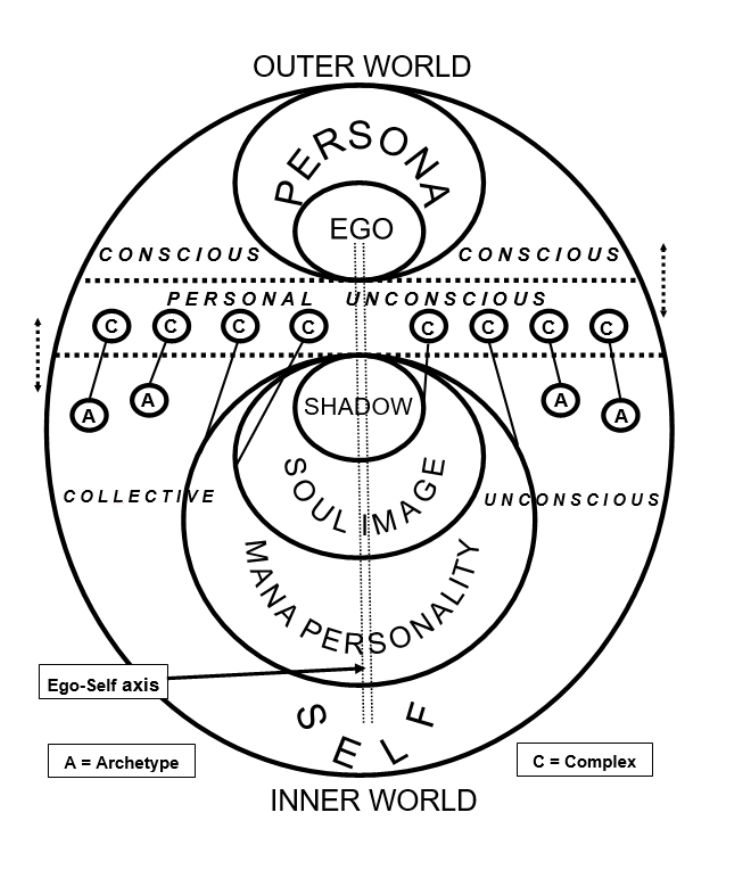
Like Freud, Jung recognised the conscious mind as the ego, which contains thoughts, feelings, actions, moods, emotions and perceptions that we are aware of in real-time.
The conscious mind is widely regarded to be what we are consciously aware of together with the “I” that identifies itself with the physical body and the material world. What is disputed is where content that appears in the conscious mind comes from.
It is promulgated by Jungians that the ego is the outer-facing aspect of consciousness and is thus only aware of what we have experienced in our lives. These experiences are stored as memories in the personal unconscious.
Together with the ego, Jung also felt the conscious mind consists of the Self — the inward-facing aspect of the personality. As you can see from the diagram above, there is a direct line between the ego and the Self which was envisioned by Jung as an ego-self axis.
The two voices that appear in your head are like the visualisation of the angel and the devil on your shoulder.

We can, therefore, assimilate that Jung’s Self corresponds with Freud’s superego in that it is in touch with both the depths of the unconscious mind and the light of the conscious mind. Read more about Freud’s model of the mind here.
However, when the ego is “one-sided”, the light of the conscious mind is a dim one for the Self. Tucked away in the mythical sea depths, cave or forest, we barely hear the voice whispering to us. It is drowned out by emotionally charged content the ego responds to.
In Jung’s model of the mind, it is the role of the Self which belongs to the conscious mind to persuade us to make a decision that is contrary to the ego. The ego responds to existing subconscious programs whereas the Self attempts to upgrade the subconscious.
Thought-Provoking Quote
“….careful awareness of the transpersonal level of the psyche is required. This means one must be Self-oriented rather than ego-oriented.”
~ Edward Edinger, Anatomy of the Psyche [2]
As we discover in the Master Mind Content Essential Self-Development Program, the ego and the Self often find themselves in conflict. In such cases, a resolution and reconciliation are necessary to bring the whole personality back to harmony.
Jung stated throughout his work that the goal of healing must be to bring the Self-ego axis into balance. This is how we achieve long-term harmony and enjoy a happy, successful and fulfilling life.
To develop the “harmony” that Jung speaks of, unconscious content that has been split off, ignored or forgotten has to be brought into conscious awareness. That is the other role of the Self.
In Jung’s model of the mind, the Self has a presence in the conscious mind, personal unconscious and the collective unconscious. It is, therefore, closer to your instinct and knows what you actually NEED as opposed to what the ego thinks it wants.
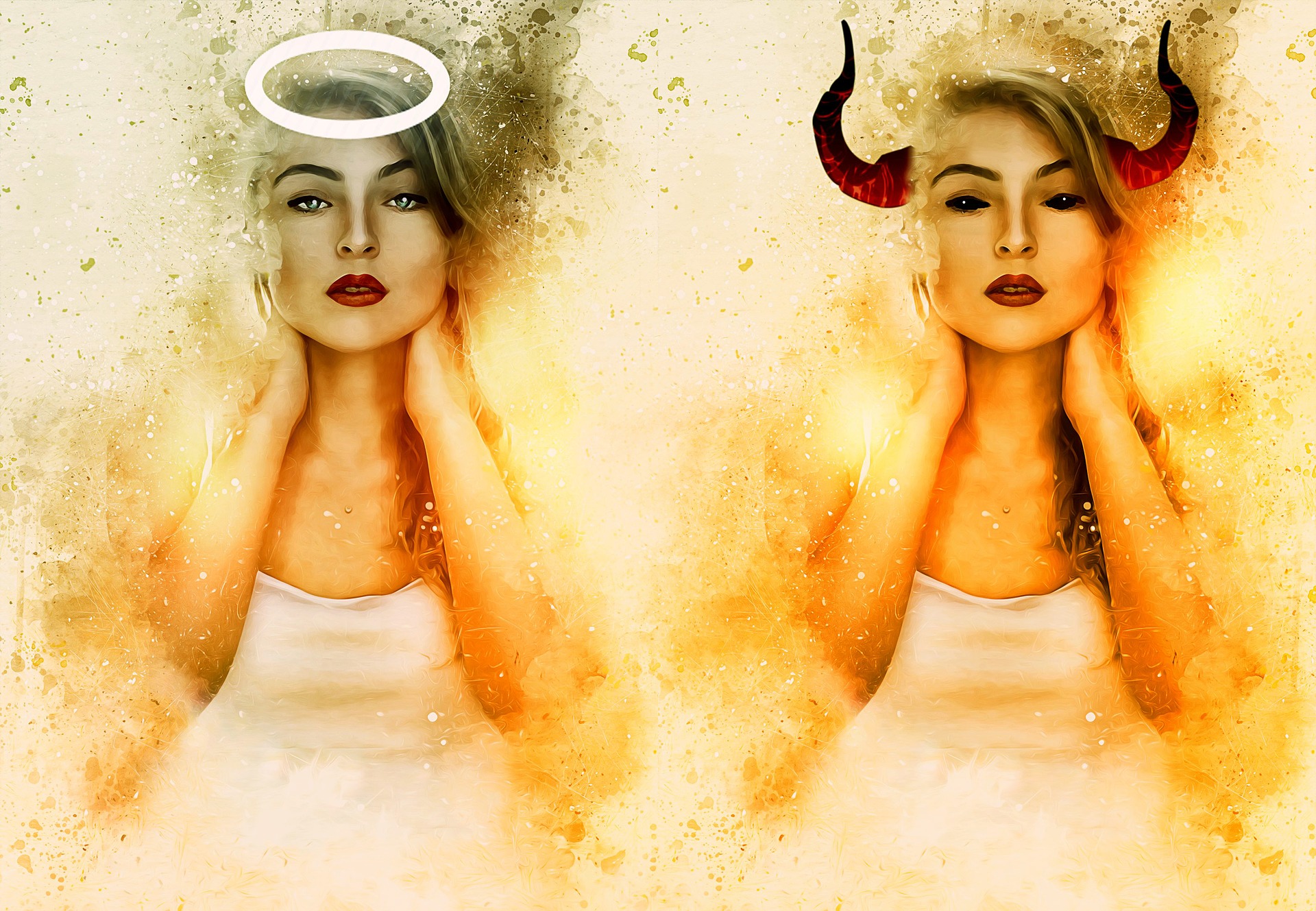
Jung’s model also includes the persona within the conscious realm. The Swiss imagined the persona as the mask we wear in public to fit in with others, calling it out as “a compromise between individual and society as to what a man should appear to be. [3]
The persona is “the individual’s system of adaptation to or the manner he assumes in dealing with the world.” [4] This archetypal quality surfaces to “enlarge” the personality when the ego does not have a subconscious program.
Jung believed that “enlargement of the archetypes can change our internal structure.” When the unconscious rises and inflates the ego, it is a signal that the ego needs to develop. The archetypal energy serves as a compensatory factor. [5]
Inflation may not be a bad thing for individuals who are self-aware and have a reasonable amount of emotional stability to accept their wrongdoing as an opportunity for growth. Otherwise, the insecure individual is more likely to become arrogant, greedy, aggressive and boastful. Or, leaning towards their good nature, the wife beater behind closed doors is altruistic and compassionate in public.
Recognising the rise of an archetype can help us to integrate the buried aspect of our personalities. Archetypes are specific patterns of thought actions and behaviours, “habitual currents of psychic energy” [6] that are common to all mankind. [7]
However, Jung also warned against allowing the ego to identify with the persona otherwise we can fall into the trap of living the life of others rather than our own, thus stunting any concept or idea of our individuality. We deal with this issue in the Everyman archetype.
Thought-Provoking Quote
“A certain kind of behaviour is forced on them by the world, and professional people endeavour to come up to these expectations. The danger is that they become identical with their personas… henceforth he lives exclusively against the background of his own biography.”
~ Carl Jung, CW9 Part 1, The Archetypes and the Collective Unconscious [8]
In Jung’s model of the mind, the personal unconscious is equivalent to Freud’s preconscious and stores memories. For simplicity, Master Mind Content has called this aspect of consciousness subconscious programs in order to differentiate between the two layers of the “unconscious” as discussed in the Essential Self-Development handbook.
The first layer is what Jung called the personal unconscious which is predominantly formed through an individual’s life experiences. This is where memories that are accessible and retrievable are stored. This includes emotions, behaviours and perceptions. Memories can be active most of the time in the form of habits, occasionally, as and when needed, or rarely.
Although the contents of the personal unconscious can be habitual, they may not always be fully formed aspects of the personality. This means that although the ego associates with the information it is receiving, we are not fully conscious of the motivation behind the instruction. This latter case gives rise to the “Shadow”.
Thought-Provoking Quote
“This discovery means another step forward in our understanding: the recognition, that is, of two layers in the unconscious. We have to distinguish between a personal unconscious and an impersonal or transpersonal unconscious. We speak of the latter also as the collective unconscious, because it is detached from anything personal and is common to all men, since its contents can be found everywhere, which is naturally not the case with the personal contents. The personal unconscious contains lost memories, painful ideas that are repressed (i.e., forgotten on purpose), subliminal perceptions, by which are meant sense-perceptions that were not strong enough to reach consciousness, and finally, contents that are not yet ripe for consciousness. It corresponds to the figure of the shadow so frequently met with in dreams.”
~ Carl Jung, CW7 Two Essays on Analytical Psychology [9]
The contents of the personal unconscious, we could say, are information that has been absorbed from the environment, processed and retained by the central nervous system. The information is stored as a “memory” in the subconscious and prompts a reaction to circumstances in our environment or when thinking about the past.
For example, you may think back over a heated conversation you had with someone and, once again, feel the emotional reaction to something they said.
For more information about how the nervous system filters out information and splits off aspects of the personality refer to the articles How The Nervous System Works and Dis-member | Re – member.

Jung also proposed that emotionally charged content resides amongst personal content. Emotionally charged content has the biggest influence over our behaviours which is why it’s so hard to overcome bad habits.
But emotionally charged content can also show up as complexes which have been described as organised groups of thoughts and feelings which project themselves into the world at any given opportunity. James Hillman notes: “These are the archetypes, the persons to whom we ultimately owe our personality.” [10]
Thought-Provoking Quote
“The idea of the pneuma as the Son of God, who descends into matter and then frees himself from it in order to bring healing and salvation to all souls, bears the traits of a projected unconscious content. Such content is an autonomous complex divorced from consciousness, leading a life of its own in the psychic non-ego and instantly projecting itself whenever it is constellated in any way — that is, whenever attracted by something analogous to it in the outside world.”
~ Carl Jung, CW 12, Psychology and Alchemy [11]
Complexes are formed in response to significant life experiences and can influence attitudes, moods, feelings, beliefs and perceptions. But most critically, they pull on the emotional charge they hold and prompt us to take on a corresponding behaviour.
This is why habits are so hard to overcome and why the subconscious program needs upgrading.
The most controversial inclusion in Jung’s model of the mind is the collective unconscious. It is this aspect that separates the Swiss’ model from Freud’s. And largely divides opinion among academics.
You are free to make up your own mind, but Master Mind Content backs Jung’s model of the mind. We call the collective unconscious the Superconscious because it contains all the parts of our personalities we need to be happy, successful and fulfilled.
Whereas Freud believed the conscious mind is only influenced by a personal influence (environment, genes and repressed emotions), Jung felt there is also an external influence that falls outside personal experience but belongs to all humankind.
Thought-Provoking Quote
“This deeper layer I call the collective unconscious. I have chosen the term “collective” because this part of the unconscious is not individual but universal; in contrast to the personal psyche, it has contents and modes of behaviour that are more or less the same everywhere and in all individuals. It is, in other words, identical in all men and thus constitutes a common psychic substrate of a suprapersonal nature which is present in every one of us.”
~ Carl Jung, CW9 Part 1, The Archetypes and the Collective Unconscious [12]
The collective unconscious contains universal symbols and themes known as archetypes. Archetypes are innate, primordial images and patterns which appear in the psyche of mankind and prompt us to react to our environment in certain ways.
How we respond to our environment is determined by the information in the personal unconscious. But archetypes can become a subconscious program in the personal unconscious by initially projecting onto the ego and assimilating an experience. If the ego associates with the archetype, the archetype can take possession of the ego. (More on that later!)
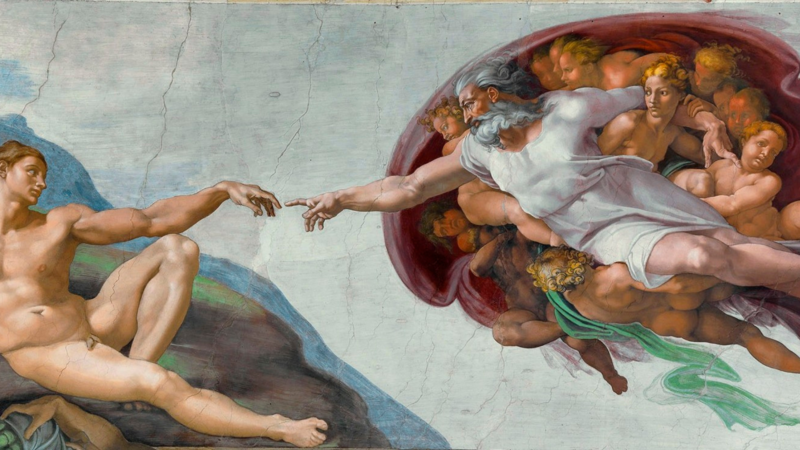
The reason for an archetype projecting onto the ego is because the ego doesn’t have the right information that enables us to manage our environment. That means that split-off fragments of our personality also influence how we interact and experience the world.
But this is also where the Superconscious can help to upgrade our subconscious programs.
Like Freud, Jung’s model of the mind depicts the conscious mind as comprised of two components which he called the ego and the Self.
In brief, the ego is the outer-facing aspect of consciousness. Its function is to interact with the external environment. The ego only knows what we have experienced and its role is to protect our emotional and physical survival together with our self-image.
That means the ego needs to be developed, or programmed with information, that is appropriate for the environment and the circumstances you find yourself in. The ego has to engage with life and be challenged in order to learn and grow.
However, an underdeveloped ego that is fed by fragmented programs is the subject of inflation which causes attachments which often serve as a coping mechanism, defence mechanism or a belief system. Attachments fill the void that opens up following the separation from the Self (i.e., comfort eating, alcohol, drugs, shopping, obsessions etc).
The Self is the inward-facing aspect of consciousness. Its function is to bring unconscious content to the awareness of the conscious mind. We could say its role is to train the ego so that we can develop all the qualities we need to live a happy, successful and fulfilling life.
The primary goal of the Self is to integrate consciousness so that we can evolve and thrive. Like Freud’s superego, the conscious aspect of the Self is the quieter voice we hear in our heads.
But as noted by the Jungian scholar Edward Edinger, the Self should have autonomy over the ego. In this way, our inner wisdom is brought into the light of conscious awareness.
Thought-Provoking Quote
“The Self is the ordering and unifying center of the total psyche (conscious and unconscious) just as the ego is the center of the seat of subjective identity whilst the Self is the seat of objective identity. The Self is thus the supreme psychic authority and subordinates the ego to it. The Self is most simply described as the inner empirical deity and is identical with the imago Dei.”
~ Edward Edinger, Ego and Archetype [13]
Think of the Self as our essence, our True Nature. It represents the whole personality. We have access to this side of our nature if we allow it to be heard. Unfortunately, most of the time, the voice of the Self is drowned out by the noise of the ego.
Consciousness wants us to develop the whole personality. Doing so enables us to excel at life, feel great and achieve optimum health. So the role of the Self is to bring the split-off aspects of our personality to the attention of the conscious mind where the knowledge can be used to develop the ego. Self-awareness is only a catalyst for development.
You still need to take decisive action by engaging in life and developing the archetypal quality you need to move beyond surviving mode and into thriving mode.
Jung suggested the Self does this by creating complexes that demonstrate archetypal patterns of behaviour. If we observe our complexes, we can identify the archetype and the quality that is trying to emerge and needs to be integrated.
Jung felt that repressed consciousness shows up in the psychobiological system as a complex. A complex is a split-off part of the personality that has some influence over our attitudes and behaviours.
The Swiss also suggested that complexes are caused by split-off consciousness that is not given the opportunity to be integrated into conscious awareness because it is either, as Abraham Maslow describes, repressed, disapproved, forgotten, neglected, unused, overlooked, unverbalised or suppressed [14]
When archetypal energies are dismembered, Jung noted that we tend to develop a one-sided attitude. But because the psyche is a self-regulating system, [15] it develops a complex as a compensatory factor designed to restore balance — the battle between the Self and the ego.
Thought-Provoking Quote
“We regard the personal complexes as compensations for one-sided or faulty attitudes of consciousness.”
~ Carl Jung, Man and His Symbols [16]
If we bring up Jung’s model of the mind again, we can see that the archetypes — labelled (a) — project from the collective unconscious (Superconscious) onto the personal unconscious (subconscious program) to create a complex, indicated with a (c).

In the first instance, Jung’s model of the mind shows us that archetypes project onto the ego “if the conscious should find itself in a critical or doubtful situation”. [17] This is what we call today a coping mechanism.
When the ego associates with a particular coping mechanism, the archetype is said to have taken “possession” and becomes one-sided in a particular behaviour. These are the habits and reactions that offer some form of comfort, relief, resistance or protection. The archetype can help us to escape anxieties and insecurities, pain, and other experiences we don’t care for such as boredom.
Critically, complexes can help us to identify where we need to bring balance into our lives.
Thought-Provoking Quote
“One of the most important changes of internal structure is the phenomenon of possession: some content, an idea or a part of the personality, obtains mastery of the individual for one reason or another. The contents which thus take possession appear as peculiar convictions, idiosyncrasies, stubborn plans, and so forth. As a rule, they are not open to correction….Possession can be formulated as the identity of the ego-personality with a complex.”
~ Carl Jung, CW9 Part 1, The Archetypes and the Collective Unconscious (1968) [18]
A good example that can be shown by various studies is the martyr complex which is associated with the Caretaker archetype.
This personality type has a longing to feel needed, accepted and appreciated so develops a one-sided tendency to put others before their own needs. In doing so, the Caretaker takes care of other people and neglects their own personal well-being, and ultimately their health.
As we can see from the healthy integration-unhealthy debilitation chart below, a complex becomes a neurosis, and then a disease. Studies show that individuals who look after terminally ill partners together with people working in the caring professions often suffer from depression and are known to develop terminal illnesses of their own. [19]
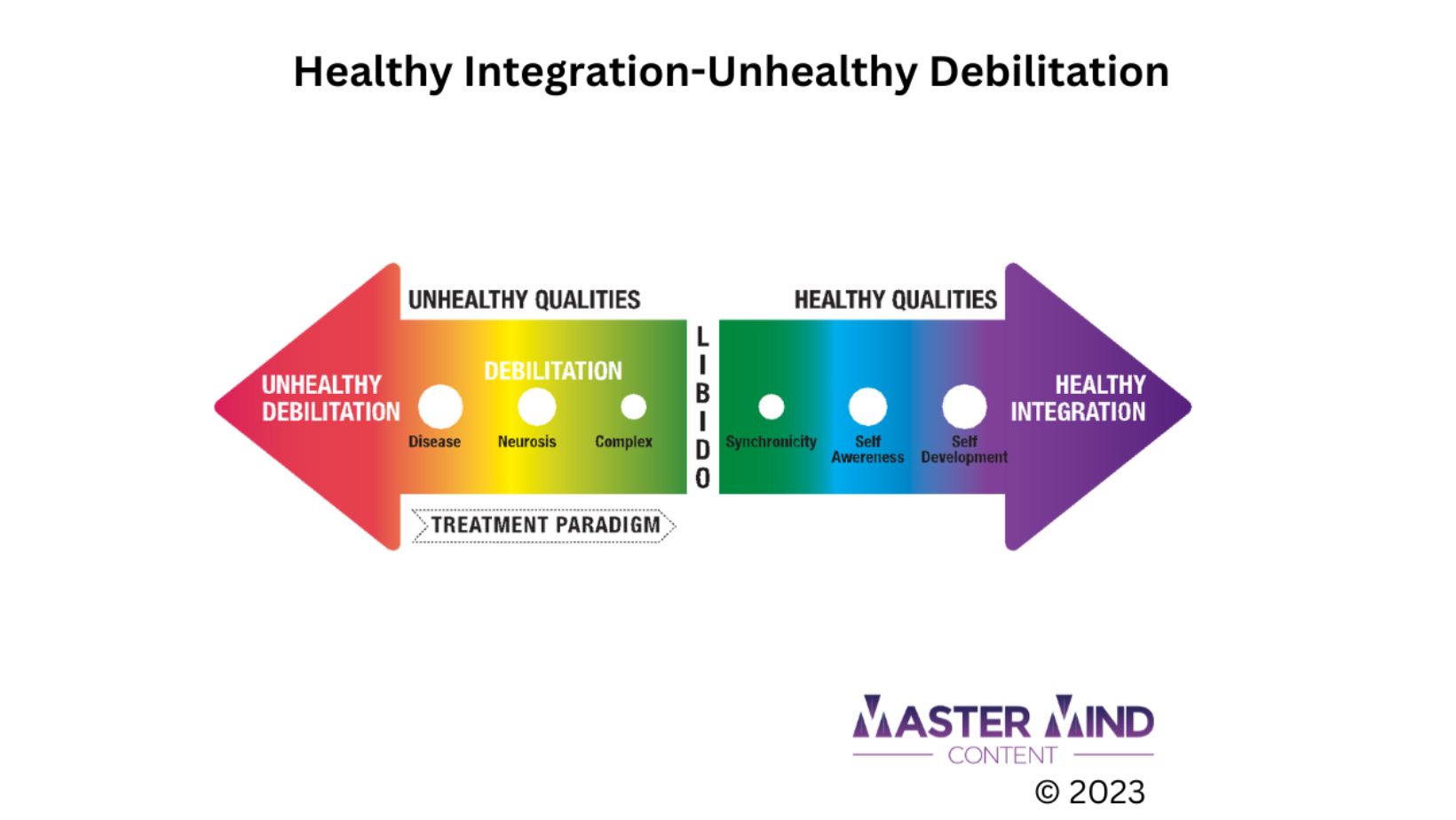
Jung’s model of the mind also illustrates that archetypal energies take possession of the ego and impress on conscious awareness by way of a complex. A complex becomes a neurosis and a neurosis becomes a disease.
In other words, archetypal energies have a life of their own and influence our personal experiences of life — even though we are not consciously aware of why the impulse, drive or motivation is surfacing. We just feel compelled to do something that provides relief or gratification because we want it.
We want it because a subconscious program informs the ego that we want it. We, therefore, become one-sided and imbalanced. Jung noted we can identify when the personality is unbalanced because there is an over-emphasis on one function which is synonymous with repression of the other. [20]
We can, therefore, say that the archetypes are a part of our personality that creates the conflict between the Self and the ego. But conflicts are created so we can discover something about ourselves and integrate dismembered content into the conscious personality.
Thought-Provoking Quote
“The loss of a soul [Splitting-off of consciousness] corresponds with the tearing loose of an essential part of one’s nature; it is the disappearance and emancipation of a complex [archetype] which therewith becomes a tyrannical user of consciousness, oppressing the whole man; it’s throws him out of his course and constrains him to actions whose blind one-sidedness has self-destruction as its inevitable issue.”
~ Carl Jung, CW6, Psychological Types [21]
In Jung’s model of the mind, we can see that a complex is essentially an archetypal energy that takes “possession” of the ego and prompts us to perform a specific action or adopt a particular attitude etc.
But its real purpose serves to highlight an imbalance of energies in the structure of the whole personality which in Jung’s model of the mind is governed by the Self and the ego.
Because a complex prompts peculiar behaviours, attitudes and emotions, these “symptoms” can be observed to identify a particular archetype as shown in the Master Mind Content archetypes tool below.
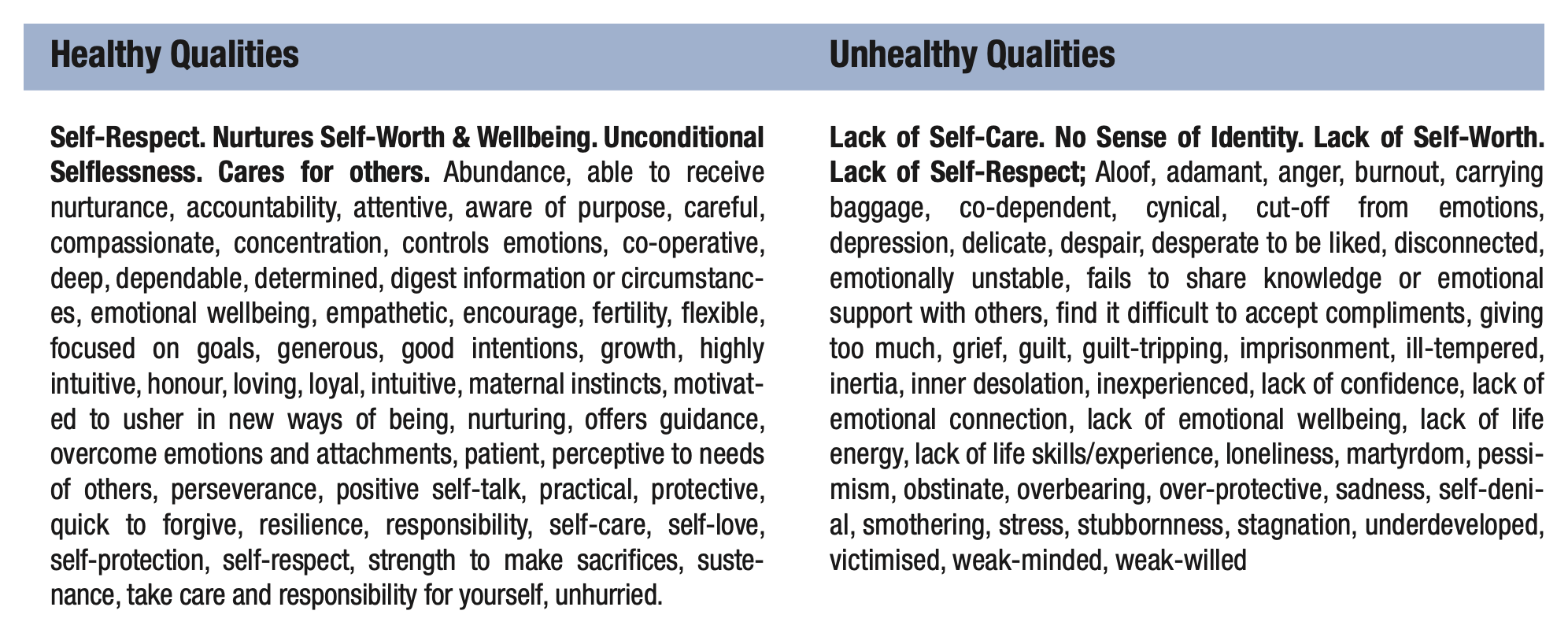
For example, distrust and anger towards the world indicate a wounded Warrior. Constant feelings of emptiness or hopelessness show a disconnect with the Divine Child. And eccentricity is associated with the wounded Creator to let people know we are different to them and do not feel as though we belong.
Although it is not clear from Jung’s model of the mind in the diagram, the Swiss also noted that archetypal energies can spring up from the Superconscious from time to time to make themselves known. These are the “moments of madness” where we act “out of character” and say things like “I don’t know what came over me” or “what on earth possessed you?”.
Although direct possession is rarer than an archetypal projection that takes possession, they are quite telling in that we get a sudden uncontrollable urge or idea that we can’t shake.
Thought-Provoking Quote
“Many complexes are merely split from consciousness because the latter [the ego] preferred to get rid of them by repression. But there are others that have never been in consciousness before and that therefore could never have been arbitrarily repressed. They grow out of the unconscious mind and invade consciousness with their weird and unassailable convictions and impulses.”
~ Carl Jung, CW11 Psychology and Religion [22]
When the ego identifies that a coping mechanism protects our emotional survival, the complex takes on a life of its own and becomes a habit. Then it becomes a subconscious program that emerges as addictions, quirks, attitudes, beliefs, and perceptions.
If a complex is not dealt with and integrated into conscious awareness in healthy and constructive ways, the energy becomes a neurosis. That means we need to identify our complexes to avoid them developing into a neurosis.
Whilst ever the ego chooses to ignore the existence of our True Nature, the archetypes, or the Self, create increasingly growing problems. The Self, therefore, is the voice in our head that we should be listening to as it passes on the message of a particular archetype.
Moreover, if we continue to be one-sided and continuously respond to subconscious programs, the archetypes can cause problems in order to highlight the limitations of our one-sided behaviour.
Thought-Provoking Quote
“A man who is possessed by his shadow is always standing in his own light and falling into his own traps. Whenever possible, he prefers to make an unfavourable impression on others. In the long run luck is always against him, because he is living below his own level and at best only attains what does not suit him.”
~ Carl Jung: CW9 Part 1, The Archetypes and the Collective Unconscious [23]
In other words, if we don’t learn life lessons by observing our complexes, nature punishes us in increasingly severe ways; from a complex, to a neurosis, to a disease.
As James Hillman noted, “The weak ego is the neurotic ego; neurosis is an ego fault; cure is control from headquarters.” [24]
Residing in headquarters is the Self which, as pointed out earlier, should have autonomy over the ego despite being the quieter voice. However, if the ego becomes inflated, we can become separated from the Self altogether.
This is why the ego either needs developing or deflating and why we should be asking do I NEED this or do I want this?
To know whether we need to develop or deflate the ego, read: “What is Ego Inflation and How Does It Happen?”
The Master Mind Content Essential Self-Development Program helps you to identify subconscious programs which prevent you from developing the whole personality. The goal is to integrate archetypal energies that are dismembered so that we are able to express our authentic Self and develop constructive ways of being that bring happiness, success and fulfilment.

[1] Carl Jung, CW7 Two Essays on Analytical Psychology, para 111 (1928)
[2] Edward Edinger, Anatomy of the Psyche (1995)
[3] Carl Jung, CW7 Two Essays on Analytical Psychology, p.158, para 246, (1928)
[4] Carl Jung, CW9 Part 1, The Archetypes and the Collective Unconscious, 2nd ed, para 221 (1968)
[5] Ibid, para 215
[6] Jung-Pauli Letters, Atom and Archetype, p.xxxii (1968)
[7] Carl Jung, CW9 Part 1The Archetypes and the Collective Unconscious, 2nd edition, para 634, (1968)
[8] Carl Jung, CW9 Part 1, The Archetypes and the Collective Unconscious, 2nd ed, para 221 (1968)
[9] Carl Jung, CW7 Two Essays on Analytical Psychology, para 103 (1928)
[10] Re-Visioning Psychology, James Hillman, p.22 (1975)
[11] Carl Jung, CW 12, Psychology and Alchemy, para 410, (1952)
[12] Carl Jung, CW9 Part 1, The Archetypes and the Collective Unconscious, 2nd ed, para 3 (1968)
[13] Edward Edinger, Ego and Archetype p.3 (1992)
[14] Abraham Maslow: Toward A Psychology Of Being, p.159, Kindle Loc 3155 (1962)
[15] Carl Jung, CW7 Two Essays on Analytical Psychology, para 92 (1928)
[16] Carl Jung, Man and His Symbols, p.79 (1964)
[17] Carl Jung, CW9 Part 1, The Archetypes and the Collective Unconscious, 2nd ed, para 477 (1968)
[18] Carl Jung, CW9 Part 1, The Archetypes and the Collective Unconscious, 2nd ed, para 220 (1968)
[19] Gabor Mate, When The Body Says No (2003)
[20] Carl Jung, CW6, Psychological Types, pp.80-81 (1923)
[21] Ibid, p.279
[22] Carl Jung, CW11 Psychology and Religion, trans. R.F.C. Hull. p.15 (1958)
[23] Carl Jung: CW9 Part 1, The Archetypes and the Collective Unconscious, 2nd ed, transl. R. F. C. Hull, para 222 (1968)
[24] James Hillman, Re-Visioning Psychology, p.26 (1975)
And that’s not always easy when you have been conditioned to pursue extrinsic rewards. It’s too easy to slip into old habits that once served as a coping mechanism but later become destructive.
Destructive habits are a sign the ego is inflated and you’re cut off from your True Nature — the Self. The Self guides you towards establishing constructive attachments that nurture emotional well-being.
Dopamine also plays a crucial role in motivation because it gives you a good feeling that is associated with pleasure and reward.
When you experience something rewarding or pleasurable, such as eating a delicious meal or receiving praise, dopamine is released in certain brain regions.

However, you can reach a point where you are not receiving “rewards” from your environment that trigger dopamine.
Dysfunctions in the dopamine system have been linked to motivational disorders, such as depression and anhedonia (a reduced ability to experience pleasure). In these cases, individuals may struggle to find motivation to engage in rewarding activities.
Thought-Provoking Quote
“Chronic stress or pain depletes dopamine and decreases the sensitivity of dopamine neurons to stimulation, reducing the defining symptom of depression — “anhedonia,” the inability to feel pleasure.” [Unhealthy Caretaker]
~ Robert Sapolsky, Behave: The Biology of Humans at Our Best and Worst, p.78 (2017)
This means that relying on rewards from external sources could be a contributing factor to your anxiety and depression if you do not feel as though you are no longer getting the rewards that trigger dopamine.
To learn more about dopamine, read the article titled: Dopamine: The Brain’s Built-In Rewards System.
In this article, I’m going to explain the difference between intrinsic motivation and extrinsic motivation. It’s important to know the difference when nurturing emotional well-being to overcome anxiety and depression.
In his book, Toward A Psychology Of Being, the American psychologist Abraham Maslow determined that humans turn most attention towards “extrinsic rewards.”
That is, the search for satisfaction from external sources is perceived to offer rewards even when it may not. It can often become the case that extrinsic rewards influence you to pursue destructive habits even though they no longer provide you with pleasure or satisfaction.
For example, when habits begin life as a coping mechanism because it once served as a source of comfort, reprieve or relief, it can later become an addiction.
Moreover, the cultural conditioning in modern times reinforces extrinsic motivation. By doing this we are being depleted of the ability to create “intrinsic motivation” and become self-actualised.

Four decades of research delivered by Carol Dweck, the Stanford-educated psychologist underlines how praise fosters a fixed mindset that limits personal growth.
Intrinsic motivation refers to the internal drive or motivation that comes from within an individual to engage in an activity, pursue a goal, or perform a task simply for the inherent satisfaction, enjoyment, or personal interest it provides.
Intrinsic motivation is characterised by the desire to engage in an activity for the sheer pleasure of doing it, rather than for external rewards or pressures.
Extrinsic motivation and intrinsic motivation have a significant influence on your behaviour.
Examples of Extrinsic Motivations:
Working a job you don’t like just to receive a financial reward.
Students may study hard to earn good grades in school, which is an external measure of achievement and often tied to extrinsic motivation.
People who do things in the hope of being validated and recognised with awards, or praise from their peers, superiors, institutions or the press can be motivated by extrinsic needs if the endeavour is not emotionally fulfilling.
The desire to win in competitive activities, such as sports or games, can be driven by extrinsic motivation to achieve victory and the associated rewards. Some elite sportsmen do not give themselves permission to celebrate the wins along the way to winning the trophy. The only goal is the big prize.
Employees may strive for job promotions, which often come with increased responsibility, status, and salary.
Avoiding negative consequences, such as a fine for speeding or a reprimand at work, can be an extrinsically motivated behaviour.
Engaging in activities you don’t enjoy but believe it will provide attention or respect can be an extrinsic motivation. For example, teenagers start smoking because they think it looks cool or pursuing a creative endeavour such as learning to play the guitar because you think it will earn you praise.
Engaging in hobbies like painting, playing a musical instrument, or gardening purely for personal enjoyment and satisfaction is an example of intrinsic motivation.
Pursuing knowledge and learning new skills out of curiosity and the desire to expand one’s horizons are driven by intrinsic motivation.

Creating art, writing, or solving puzzles for the inherent joy of the creative process is an intrinsically motivated activity.
Volunteering and helping others in need can be intrinsically motivated by the sense of fulfilment and the satisfaction of making a positive impact.
It’s important to note that extrinsic and intrinsic motivation can coexist and interact in complex ways.
For example, an employee may initially be extrinsically motivated by the prospect of a job promotion (external reward) but may also find intrinsic motivation in the work itself, especially if they enjoy the tasks and feel a sense of accomplishment.
The same is true for people who engage in sports or creative pursuits that take effort but essentially bring pleasure during the process.
Pursuing personal growth and self-improvement goals, such as becoming a better person or developing new skills, can be intrinsically motivated as well as extrinsically motivated.
The balance between these two types of motivation can vary from person to person and context to context. Effective strategies for nurturing emotional well-being to over anxiety and depression should be centred around things that you want to do and have a passion for, even if the ultimate goal is extrinsically driven.
Examples of activities driven by intrinsic motivation include pursuing hobbies, engaging in creative endeavours, learning new skills for personal satisfaction, or volunteering for a cause one is passionate about.
To help you decide which activities to pursue in order to nurture emotional well-being to overcome anxiety and depression, consider the key characteristics of intrinsic motivation:
Intrinsic motivation often involves a sense of autonomy and choice. Individuals engage in activities because they genuinely want to, not because they are compelled to do so by external factors.
People intrinsically motivated to do something find the activity inherently interesting and enjoyable. They derive satisfaction from the process itself, regardless of external outcomes.
Intrinsic motivation is often associated with a desire for learning and personal growth. Individuals may engage in activities because they are curious, want to acquire new knowledge or skills, or seek challenges and mastery.
Intrinsic motivation can lead to a state of “flow,” where individuals are fully immersed in an activity, lose track of time, and experience a deep sense of engagement and fulfilment.
Intrinsic motivation is closely tied to the satisfaction of basic psychological needs, as proposed by Maslow’s Theory of Self-Actualisation and Dweck’s Growth Mindset.
These needs include:
Intrinsic motivation is often contrasted with extrinsic motivation, where individuals are driven by external rewards or pressures, such as money, praise, grades, or social approval. While extrinsic motivation can be effective in certain situations, intrinsic motivation is considered to be more sustainable and conducive to long-term engagement and well-being.
If you’re feeling sad, hopeless, unloved, unappreciated, unmotivated and less excited, it’s likely that you have a dopamine deficiency. To compensate for the deficiency, the mammalian brain generates a craving for behaviours that activate the dopaminergic system.
The dopaminergic system is basically the brain’s reward system and plays a central role in establishing your mood.
Dopamine is a “feel-good” neurochemical that serves as a motivational signal in the brain. When you anticipate a reward or engage in goal-directed behaviours that are associated with rewards, dopamine levels tend to increase.
This anticipatory increase in dopamine acts as a signal that motivates you to seek and engage in certain behaviours that you know may lead to the reward. Because you felt rewarded in the past.
For example, research has found that the dopaminergic system lights up when people eat their favourite foods, [1] N Volkow et al (2010) or what has been described as “comfort foods”.

A 2020 paper published in the journal Physiology & Behavior [2] further discovered that the brain has “hedonic hotspots” [3] — subregions that amplify satisfaction and can stimulate your motivation to seek out activities or things to consume which give you sensory pleasure.
Thought-Provoking Quote
“Our frequent human tragedy is that the more we consume, the hungrier we get. More and faster and stronger. What was unexpected pleasure yesterday is what we feel entitled to today, and what won’t be enough tomorrow.” [Wounded Ruler; gluttony, greed, lust etc]
~ Robert Sapolsky, Behave: The Biology of Humans at Our Best and Worst, p.83, (2017)
The problem with dopaminergic urges is that we grow resilient to them. Once rewards are learned, dopamine becomes more about his anticipation or reward rather than the reward itself.
This can result in one of two behaviours. The body stops producing dopamine and you risk becoming depressed. Or your craving can’t be satisfied so you up the dosage or consume more in a vain attempt of stimulating the pleasure you crave.
Dopamine makes you feel motivated to move towards things that don’t actually satisfy you anymore but you still crave more of it because past experiences have raised your expectation.
Because a habit is associated with satisfaction — a survival mechanism that worked in the past — dopamine discharges make it difficult to stop performing an action that you perceive will deliver sensory pleasure.
That’s because dopamine reinforces learning and conditioning. It helps the brain learn which behaviours are associated with positive outcomes and reinforces those behaviours.
Dopamine release strengthens the neural pathways associated with that behaviour, making it more likely to be repeated in the future. So it’s important to recognise specific habitual behaviours you believe will lead to a reward.

One way to do this is to recognise when you do not feel rewarded by a “comfort” behaviour. Irrational guilt surfacing from the Self is also an internal message that a particular behaviour is no longer providing you with any value.
This anomaly of dopamine can be seen in various examples of certain behaviours that portray intrinsic motivation and extrinsic motivation. You will probably also recognise when you do things that are driven by dopamine rather than an actual need.
Essentially, dopamine binds you to an attachment whereby you feel you are entitled to and deserving of a reward (Lover). But when you build resilience to it, you no longer feel satisfied.
Subsequently, you feel sad, frustrated, hopeless, low-energy, less excited etc. Studies show a correlation between depressive moods and low dopamine levels. [4]
You can read an example of this from Greek mythology in the story of Tantalus.
It’s clear to see how dopamine is implicated in addiction. Substance abuse and certain behaviours, like gambling, emotional eating, promiscuity and sex addiction, shopping, working out etc, can lead to excessive dopamine release that reinforces addictive behaviours that can prove to be destructive rather than constructive.
Over time, individuals may become motivated primarily by the anticipation of the substance or behaviour that triggers dopamine release rather than the actual value or pleasure meeting your goal delivers.
In addition, dysfunctions in the dopamine system have been linked to motivational disorders, such as depression and anhedonia (a reduced ability to experience pleasure).
In these cases, individuals may struggle to find motivation to engage in rewarding activities. You, therefore, need to understand how your motivation is being triggered and identify whether the perceived need is constructive or destructive.
If you are suffering from anxiety and depression or overcoming emotional wounds that rely on nurturing emotional wellbeing, check out our article titled: Nurturing Emotional Wellbeing To Overcome Anxiety and Depression.
[1] Reward, dopamine and the control of food intake: implications for obesity, N Volkow et al (2010)
[3] Pleasures in the Brain, Kringelbach & Berridge (2010)
[4] Dopamine System Dysregulation in Major Depressive Disorders, Belujon & Grace (2017)
In Greek mythology, hope was the only spirit left in Pandora’s box once all the “evils” (pain and suffering) had been released into the world. Once she realised her mistake, Pandora slammed the jar closed so that hope couldn’t escape.
To open “Pandora’s box” is an idiom for managing challenging situations in life that give you the opportunity to grow.
But depending on how you react to challenges, you could be filled with just optimism; or you could face chaos, pain and suffering.
This is why the ancient Greeks, considered hope belonged in a jar of evil spirits in the first place. Hope is a double-edged sword that cuts you free from misery, or cuts you and causes misery.

Scientific investigations in the modern epoch show that hope involves adopting a specific emotional and intellectual outlook towards a future potential. [1]
Studies reveal how adopting hopefulness and optimism can help to nurture psychological and physical well-being [2]
In addition, it was attested that hope cultivates a positive frame of mind which can help individuals produce adaptive outcomes. Hope and optimism are coping strategies which can help you to manage stress. [3]
For example, hope can serve as a powerful motivator and bolster resilience in the face of adversity. It helps individuals cope with difficult situations, setbacks, or hardships by maintaining a belief in the possibility of improving or adapting to current situations.
Researchers [4] indicate that hope is associated with improved mental states, enhanced emotional well-being and positive perceptions towards feeling supported by the wider community.
The way we perceive hope as a collective also implies a positive emotion is attached. You will know from experience that hope gives you an air of confidence which can promote happiness, enthusiasm, and optimism. Optimism, in particular, is shown to reduce symptoms of depression and anxiety.
All good then.
But, the science of the day has not considered one important factor.
False hope.
Hope can make you blind. And this is what the myth of Pandora’s box warns us.

The lesson to learn from the myth is how to cultivate hope and optimism you can trust rather than false hope and blind faith that will inflict pain and suffering.
Hope is retained in the jar to give you something to work with.
I think it’s safe to say that we can all agree the mind plays tricks on us. This is the Trickster at play. And false hope is one of the Trickster’s illusions.
Greek myth shows us this in the story of Pandora’s Box. Zeus orders Pandora to be made from clay to counteract the blessing bestowed on mankind after Prometheus steals fire from the gods.
In his tragedy, Prometheus Bound, Aeschylus tells us that the two great gifts Prometheus gave to humanity are fire and hope. Fire is symbolic of self-awareness, action and passion. When you combine fire with hope, they can be great gifts because hope alone is futile without taking the appropriate action.
But the words placed in the mouth of Prometheus by Aeschylus speak of “blind hopes”.
Chorus: Did you perhaps go further than you have told us?
Prometheus – I stopped mortals from foreseeing their fate.
Chorus – What kind of cure did you discover for this sickness?
Prometheus – I established in them blind hopes.
Chorus – This is a great benefit you gave to men.
~ Aeschylus, Prometheus Bound
Why would blind hopes be a great benefit to men?
If we take scientific discovery into account, blind hope can help relieve stress and anxiety. This is a benefit. But if blind hope is misleading, all you achieve is an ignorance of impending doom you are later unprepared for.
This potential is personified by the character, Epimetheus in the myth of Pandora’s Box.
Prometheus is recognised as a Trickster god. Pandora’s box was created because he stole civilising arts and fire from the gods to give to humans.

In Greek mythology, Prometheus is depicted as insightful, humble, and imaginative. These are the attributes of the Trickster. This fun-loving energy can fill you with optimism and hope. The name Prometheus means foresight.
His brother, Epimetheus, on the other hand, is gullible, materialistic and out of touch with reality. He is recognised as the “proverbial fool.” These are traits of the wounded Trickster.
When the Trickster’s energy is not developed, the mind plays tricks on you to show you the error of your ways. Hope tricks you into feeling a false sense of optimism — but the intention of the Trickster’s illusions is to deflate the ego and bring you into contact with self-awareness.
This is why Aeschylus says blind hope is a benefit to mankind. When you realise your optimism was misguided, it can wake you up to reality. The wounded Trickster is not in touch with reality. The healthy Trickster is.
The healthy Trickster, like a magician, is also a master of creation. In this sense, this archetype shares similar qualities as the Creator; Athena and Hephaestus from whom Prometheus steals arts and fire respectively.
But when the Trickster is underdeveloped, and you have an overinflated ego, there may be times when you feel optimistic but you are, in fact, tricking yourself into believing an illusion created by the mind.
Some might say, a delusion. The proverbial deluded fool.
Delusion is clearly not a benefit or a gift. So why does Aeschylus say it is a “great benefit”?
Remember, hope was the last of the “spirits” left in Pandora’s Box. Why is hope in a jar filled with evils?
We have to assume that hope — blind hope — can be beneficial if we bottle it up inside the jar and cultivate it properly.
To do this, you need to call on the healthy qualities of the Trickster, an energy that is linked by the Greek god Hermes — the intellectual mind that has the ability to traverse all three worlds; the conscious mind, the superconscious and the subconscious.
I also associate Dionysus with the Trickster, the wandering minstrel who spends most of his time in the forest, a symbol of the inner world, fertility and growth. But a forest also represents potential danger and getting lost – which is what can happen to the mind when it is inebriated. Dionysus is most commonly associated with wine (although wine is a symbol of transformation).
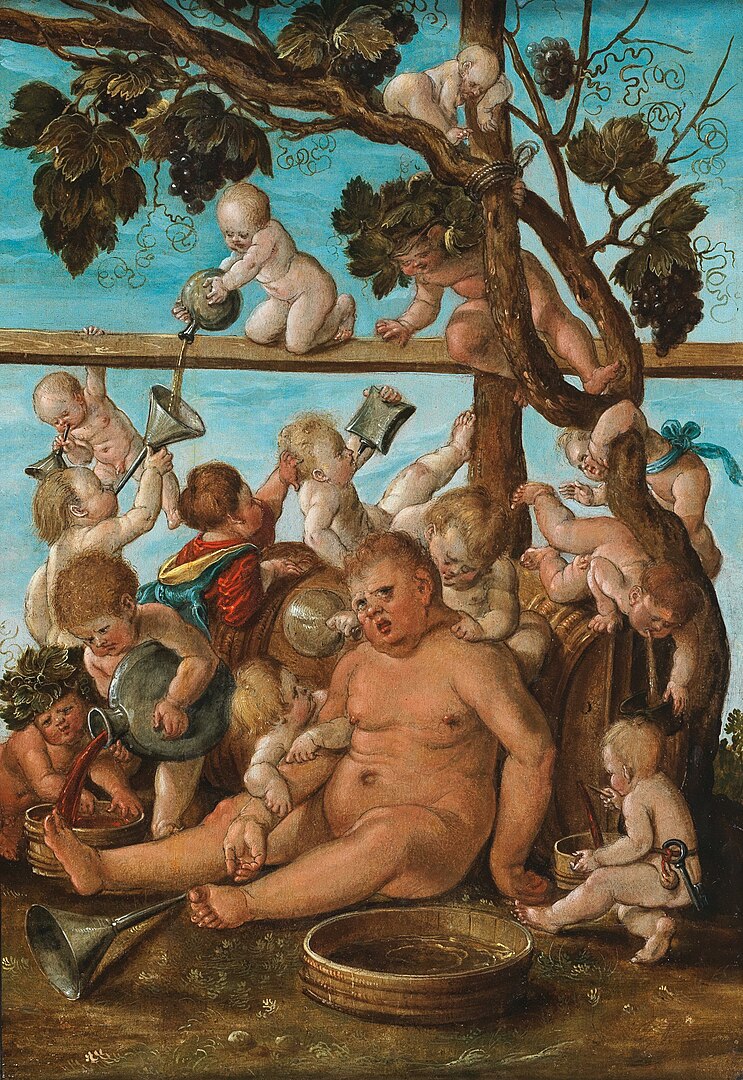
Blind hope can distract your attention from staying on the right path whereby you risk getting lost. If your hopes are to become manifest, you have to take the appropriate action. Wishing upon a star is the work of the wounded Trickster, the developed Trickster can help you to manifest your hopes through imagination.
In this article, we will focus on how to cultivate hopefulness you can trust by reaching a rational conclusion which gives you just cause to be optimistic.
You will learn how you reach a decision that fills you with genuine hope. That can only be determined by how you think about challenges and explore your options in search of solutions.
Finding solutions for problems is what prompted Prometheus to steal civilising arts and fire from Athena and Hephaestus in the first place. Athena and Hephaestus are the energies that influence the Creator — the archetype that gives you the tools to cope with your environment.
In almost every case when you are confronted with a challenge, constructive ways of thinking are required. More precisely, a balance between thinking and feeling, rationale and reason; intellect and intuition.
Cultivating a sense of hope that you can trust requires a bi-lateral approach.
William James suggested that optimism, and its opposite, pessimism, is the product of how we think. He highlighted two distinct types of thinkers; rationalists and empiricists.
In discussing James’ work in his book Psychological Types (1921), the distinguished psychoanalyst Carl Jung describes the rationalist as logical intellectualism that is devoted to established principles. [5]
The rationalist has a way of thinking which is purely logical and seeks to discuss the truth of opinions based on the representation of facts. They have a concrete way of thinking based on “sense-established facts”. [6]
This type of thinker tends to be more optimistic, but can also be misled if the conclusion you hang your hat on is not sound advice. This type of thinking alone is synonymous with the undeveloped Trickster; i.e. manipulation, and blind hope.

The empiricist is synonymous with sensationalism and gathers pieces of information from various sources. This type of thinker tends to be more exploratory in his thinking and collects parts from various sources to create a whole.
The empiricist leans more to pessimism, [7] perhaps due to mistrust in other people’s opinions. But pessimism provides a good balance between optimism and gives you the foresight of Prometheus which his foolish brother lacks.
Thought-Provoking Quote
“The rationalist is a man of feeling, while the empiricist is a hard-headed creature…The rationalist is readily dogmatic in his statements while the empiricist is sceptical.” [8]
~ Carl Jung, CW6, Psychological Types
Jung felt there has to be a balance between the two types of thinking if you have any hope of reaching a satisfactory conclusion. His standpoint on rationalist intellectual thinking is…
Thought-Provoking Quote
“…there is something very frail and dependent about concrete thinking, because, instead of having stability in itself, it depends upon outer objects, which are superordinate to thought at determining values. Hence, this kind of thinking is characterised by a succession of sense bound representations, which are set in motion, not so much by an inner thought activity, as by the changing stream of sense perceptions.” [9]
~ Carl Jung, Psychological Types
In other words, don’t believe everything you read and hear as given without observing how you feel about it. William James describes the rationalist as “tender-minded”.
Rationalism does have its place, of course. Logic and reason are two of the highest functions the thinking man can achieve. But concrete thinking can give you false hope because it doesn’t encourage you to explore a broader range of alternatives. It is, therefore, ego-driven.
Sensationalism, however, encourages exploratory thought processes which look at problems from multiple perspectives. This way you can observe how you feel towards various options. Do your inner senses inform you that you have arrived at the Truth based on your experiences and not merely on information that has come to you?
Sense-given thinking gives direction to concrete rational thoughts. The Trickster is associated with Hermes, “the messenger of the gods” which gives you a free-flowing imagination and can bring intuition and intellect into harmony.
Exploratory imagination is what enables you to be innovative and insightful and helps you to avoid the trap of the wounded Trickster.
But likewise, sensationalist thinking alone can also walk you into an illusion conjured by the Trickster.
Thought-Provoking Quote
“But if the empirical thinker attributes a resistant substantiality to concrete thinking, from the abstract standpoint, he is deceiving himself.” [10]
~ Carl Jung, Psychological Types
Jung noted that abstract thinking tends to remain inactive in individuals who are mostly influenced by sensationalism i.e. you have an emotionally charged attachment to an object and the emotion becomes the determining factor of the decision-making process. [11]
Here we see the potential for the Trickster to weave an illusion through the energy of Dionysus who is also associated with the Lover — the energy that binds you to attachments.
Sometimes the head has to rule the heart, just as much as intuition has to be listened to over the intellect. The latter is the voice of reason. Pythagoreans acknowledge reason as the highest faculty of mind.
Thought-Provoking Quote
“Reason… is the capacity to be reasonable, a definite attitude which enables thought, feeling, and action to correspond with objective values. From the standpoint of empiricism this “objective” value is the yield of experience, but from the ideological standpoint it is the result of a positive act of valuation on the part of the reason.” [12]
~ Carl Jung, CW6, Psychological Types
Hope is a fundamental aspect of the human experience, and it can play a significant role in shaping your attitude and helping you to navigate the ups and downs of life. It is a source of inspiration, resilience, and motivation that can lead to positive actions and outcomes. But don’t allow blind hope to mislead you into a false sense of security.
[1] Dufault and Martocchio, (1985)
[2] Anderson & Snyder, 1988; Elliott, Witty, Herrick, & Hoffman, 1991; Lewis & Kliewer, 1996; Nunn, Lewin, Walton, & Carr, 1996; Sherwin et al., 1992; Snyder, Harris, et al., 1991; Snyder, Irving, & Anderson, (1991).
[3] Scheier, Weintraub, & Carver, (1986)
[4] Hope and Optimism as an Opportunity to Improve the “Positive Mental Health” Demand (2022)
[5] Carl Jung, Psychological Types, CW6, p.373 (1921)
[6] Ibid, p.376
[7] Ibid, p.373
[8] Ibid, p.373
[9] Ibid, p.376
[10] Ibid, p.376
[11] Ibid, p.379
[12] Ibid, p.383
If feelings of anger and frustration erupt frequently, you probably need to address issues associated with the Hero (Ares and Artemis) or the Creator (Hephaestus and Athena) archetypes.
Anger and frustration can also emerge in other archetypes, namely the Everyman (Hephaestus and Aphrodite), Warrior (Zeus and Athena) Philanthropist (Poseidon and Demeter), Trickster (Hera) and Caretaker (Demeter).
How anger emerges for you will be determined by whichever archetypal energy you have not yet integrated into your personality. But once you recognise your triggers and bring self-knowledge into self-awareness, you will be able to identify which archetype your anger is related to.
I think we can probably all hold our hands up and say, we allow ourselves to get angry too easily at times.
But if anger and frustration have become a destructive force for you, it is in your best interests to identify your triggers, pinpoint the complex and resolve the conflict in the Self-ego axis.

Question: How long will you allow your anger and frustration to control your behaviour, mood and health?
You can determine whether anger and frustration are a problem for you by observing the length of time it takes you to calm down and snap out of it.
According to studies, the average person takes around 20 minutes to calm down from a fit of anger. [1]
The recovery period only includes the initial outburst and the chuntering that follows.
It doesn’t count the ruminating, which in my experience, would go on for days.
Whilst you’re ruminating in the aftermath of an anger fit, the stress hormones, cortisol and adrenaline are being pumped into your body.
Ruminating can also re-trigger your anger.
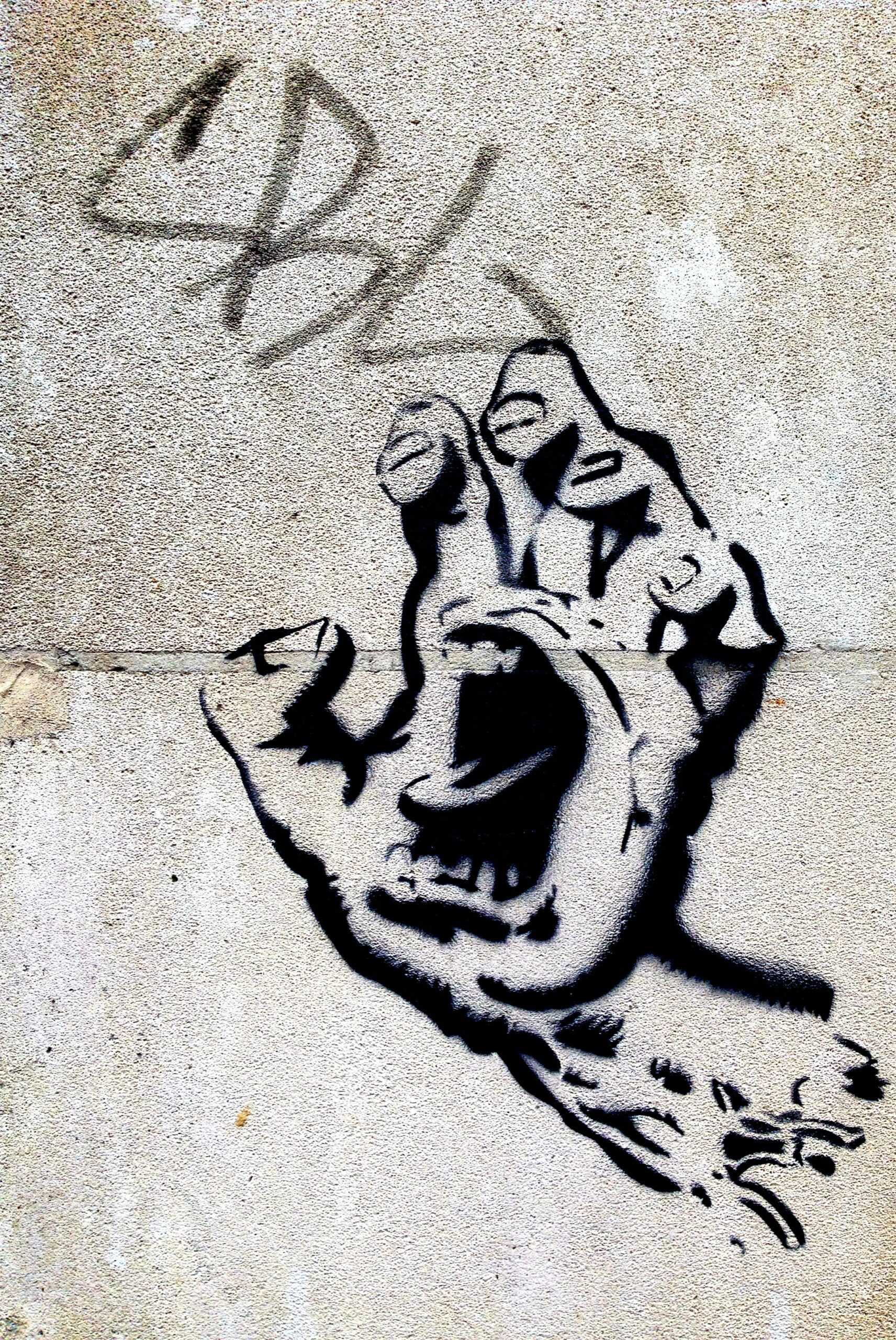
What’s more, ruminating reinforces your belief. It confirms your point of view is right. Again, in my experience, I used to ruminate to justify my position, to prove I was right, not wrong, good, not bad.
Is that what you’re doing also?
If you are truly honest with yourself, you can admit when you are wrong — or at the very least recognise that points of view don’t always matter and they certainly shouldn’t make you angry. Anger and frustration is usually a response to feelings of rejection and abandonment which threatens to compromise your emotional survival or self-image.
Most of the time, anger and frustration surface because you are angry and frustrated with yourself. What you’re actually doing is projecting these unresolved feelings outwards onto someone else because the fragile ego can accept any wrongdoing by it or to it.
Thought-Provoking Quote
“The neurotic individual may be described with great usefulness as a grown-up person who retains his childhood attitudes toward the world. That is to say, a neurotic adult may be said to behave as if he were actually afraid of a spanking, or of his mother’s disapproval, or of being abandoned by his parents, or having his food taken away from him. It is as if his childish attitudes of fear and threat reaction to a dangerous world had gone underground, and untouched by the growing up and learning processes, were now ready to be called out by any stimulus that would make a child feel endangered and threatened. Horney (197) especially has written well about basic anxiety.” [2]
~ Abraham Maslow: Motivation and Personality (1954)
With your worldview reinforced, the next time you encounter resistance to whatever it is you are attached to, you’ll be triggered again.
And again.
And again.
Every time you become angry and frustrated you are damaging your health, [3] reputation and relationships.
The triggers for anger and negative emotions vary, but the underlying patterns are usually:
The single underlying source of anger and frustration, however, is attachment to beliefs, perceptions, attitudes and emotionally charged issues you feel passionate about.
Anger is a powerful emotion that can be a double-edged sword. Rooted in passion, anger can be transmuted positively to drive motivation, determination and assertiveness [Hero].
On the flip side, when you have little or no control over your emotions, anger and frustration can be destructive; to your mental and physical health, and your relationships.
The American Psychological Association (APA) [4] note:
Informational Quote
“Whatever shape it takes, uncontrolled anger can negatively affect physical health and emotional wellbeing. Research shows [5] that anger and hostility can increase people’s chances of developing coronary heart disease, and lead to worse outcomes in people who already have heart disease. Anger can also lead to stress-related problems including insomnia, digestive problems and headaches.”
Society seems at odds with how we should control or manage anger and frustration. Some people will say, “Express your anger, don’t hold it in”. Others are taught that anger is not an acceptable way to behave. So they suppress it.
I think we can all agree that suppressing anger is not good for your health. But expressing explosive emotions is not good for your relationships, your reputation or your self-esteem.
So what is the antidote? It’s certainly not following the advice offered by medical institutions:
Hey ho.
Not one mention of re-channelling it. Or even better, healing the underlying cause.
Thanks to fMRI scans, neuroscience is able to explain what happens in the brain-body connection when a negative emotion is triggered.
Anger and frustration surface from the amygdala, an almond-shaped gland that is responsible for evaluating the emotional response to situations and objects; your brain assesses whether the situation or object is good or bad.

The amygdala essentially identifies threats to your physical and emotional well-being. When a threat is detected, for example, when your worldview is challenged, the fight or flight survival mechanism flares up.
The amygdala is also responsible for executing rewards and punishments which are correlated with memories — particularly emotionally-laden memories.
Emotional arousal influences the strength of past experiences stored in your memory bank and prompts actions in the present. Each time you have a similar experience, the memory is charged with more energy and enhances the retention of that memory.
So the last thing you want to be doing is ruminating or throwing your fists at something. One day, it might not be a pillow you’re punching.
When we receive information from the outside world, it goes to various parts of the brain. How we react may depend on whether energy takes the “high road” or the “low road”. [6]
When information travels through “low road” pathways, it bypasses the cerebral cortex and is received by the amygdala in the limbic system.
The limbic system is your emotional centre. Its function is to regulate emotion, behaviour, motivation, long-term memory, and olfaction.
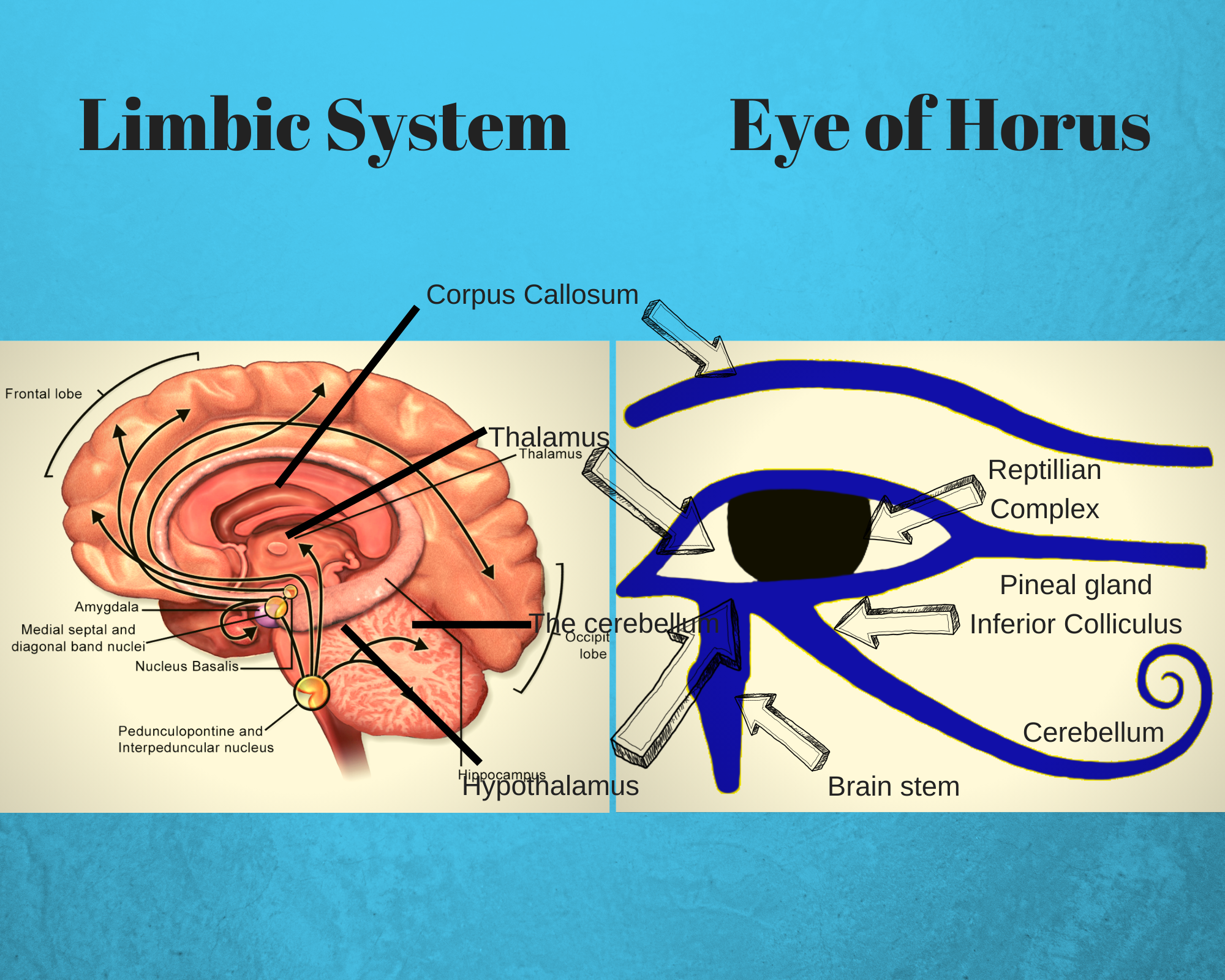
The cerebral cortex, on the other hand, performs executive functions including logic, control and judgement.
Obviously, you want the information to reach your cerebral cortex before the amygdala. The left prefrontal cortex can dampen your emotions and help you retain your composure.
However, logic, sometimes, is at a disadvantage. Emotional responses are milliseconds faster the rational thinking. As a result, your actions are at the mercy of your programming.
Thought-Provoking Quote
“When we are calmly energized (good stress), the brain secretes catecholamines, adrenaline, and noradrenaline. This kind of “stress” is beneficial because we can perform at our best. When stress is severe, the brain secretes cortisol, which intensifies sensory awareness but dulls rational thinking. When levels of this substance are high, our memory does not work well, and we make more mistakes. Cortisol levels rise when we are bored, frustrated, or highly anxious, or when we have other strong negative emotions.”
~ Emily A. Sterrett, Ph.D, The Science Behind Emotional Intelligence
If external stimuli prompt a ‘survival’ state, the information has taken the “low road” to the amygdala and bypassed the cortex. As a result, you’re more likely to respond emotionally without thought or judgment.
The actions of people who struggle with anger issues are driven by emotions. They are in a state of survival and logic doesn’t get a look in. As a result, anger becomes a bad habit.
A burst of energy in the limbic system can last up to several minutes — long enough for you to say something you’ll later regret. By that point, your emotional outburst may have already spilt over into an all-out argument.
Even if the other person doesn’t react and that initial burst of energy subsides, the emotional charge is still present in your system and your anger plays out in your head.
This scenario will probably cause more damage to your mental and physical health than actually expressing your anger.
How many times have you been in an argument with your girlfriend or boyfriend, leave the room momentarily and go back to argue again 10 minutes later?
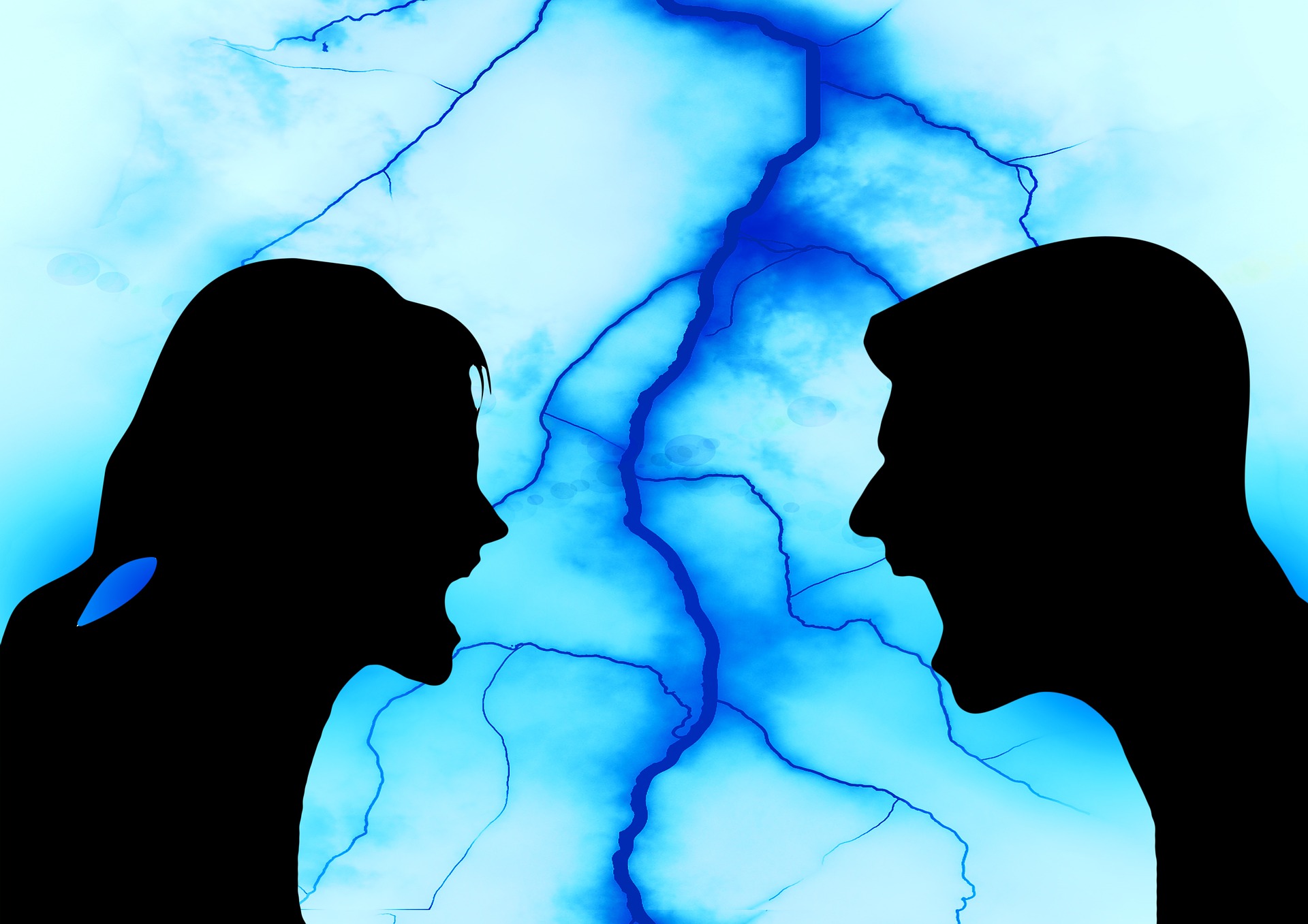
Did you return after ruminating, reinforcing your world view and finding ammunition to attack with?
A constructive strategy is to look at the issue from another angle and ask yourself, what is really triggering this anger?
By making certain observations, you will recognise that your anger is internal. Oftentimes, it will be because you feel rejected or abandoned and you don’t feel loved or cared for, i.e. your lover is not paying enough attention to you, your ideas are being rejected, and you’re not getting what you want.
Other times, your anger will be self-inflicted — literally, the Self (Superego) raging at the ego for being too one-sided. [Hera/Poseidon/Zeus] But the purpose of this outburst is to draw the ego’s attention to your wrongdoing.
If you develop emotional intelligence, it’s possible that you recognise the warning signs of anger before they explode. In this situation, you need to observe your patterns over a period of time.
Record moments and feelings that trigger feelings of restlessness and frustration, suppressed anger and any other moments you didn’t express your passion — the energy spectrum anger sits on.
You may even reach a point where you can calm down, but your brain still gives your body a shot of adrenaline and cortisol. Stress hormones are the cause of countless illnesses. [7]
The most efficient approach to overcoming anger and frustration is to understand what is it that triggers you. This enables you to reach a point of self-realisation.

You then need to accept that you have a destructive attachment and let it go.
Hey presto, you adopt a new attitude towards the world and no longer have anger issues in relation to that particular attachment.
Anger and frustration arise from attachment. Attachments are everything your ego thinks it needs to survive emotionally.
When you don’t get the thing you are attached to, you become frustrated which can then explode into anger further down the line.
This makes sense when you consider that attachments are gifts of gratification the ego thinks it needs to protect your emotional survival or self-image.
Attachment does not only relate to material objects. They are also beliefs, perspectives, values, behaviours and ideals; your view of the world.
Thought-Provoking Quote
“When we get angry, our asymmetric cerebral response is measured by the motivation of closeness to the stimulus that causes us to be angry and not so much by the fact we consider this stimulus as negative: “Normally when we get angry we show a natural tendency to get closer to what made us angry to try to eliminate it.”
~ Neus Herrero, University of Valencia
If you notice you get frustrated when people don’t agree with your opinion or you don’t get the outcome your “reward centre” thinks you need, anger could be brewing.
In this instance, the issue is insecurity; low self-esteem, lack of self-love, lack of self-care, fear of rejection, fear of abandonment, feeling that you don’t fit in, that you’re not good enough, that nobody cares about you etc.
With self-observation, you will find that your anger and frustration occur when you don’t get what your ego is programmed to need in order to survive. Feelings of lack, or that your basic needs are not being met, brew up a batch of anger.
Like the god Ares, when this energy erupts, your mind is flooded with the proverbial red mist [8] and you charge into battle without any thought of the consequences.

This is the destructive side of the amygdala at work.
When anger surfaces from the unconscious, intense feelings must be identified and dealt with; they don’t just go away on their own.
Identifying triggers that cause anger and frustration is the first step to healing trapped emotions. The root cause generally goes back to childhood.
Negative emotions like anger and frustration are warning signs that signal you have repressed emotions that have not been dealt with. With self-observation, negative emotions can be used as a self-development tool.
Healing emotional pain is similar to healing physical pain. Analyse what triggers anger and frustration and you are a step closer to releasing repressed consciousness and integrating trapped emotions in the conscious mind.
When you can identify negative emotions that trigger survival instincts, they guide you to matters that need addressing. Determine what your attachment is and let it go.
Adopting breathing exercises will also suppress emotions, but will help you to relax when you recognise the warning signs. Use breathing exercises to take you into a contemplative state of mind and use the self-observation tool from the Essential Self-Development Programs toolkit to help you find answers.
You can also use the Mind v Reality tool. This will help you to identify the belief system or attitude in your subconscious program that triggers your anger and look at the world from a different point of view. When you reach a point of clarification, you can adopt a different belief or attitude to upgrade your subconscious programming.
You need to reflect on your triggers. If you leave suppressed anger to fester, you will continue to cling to the same attachments and react in the same way.
Letting things go is a really powerful tool to fortify your emotions — once you learn how to do it. It’s really just a matter of mindset, it will only work once you have cleared some of the repressed emotions stored in your subconscious programs.
Ancient Wisdom Alert
“Who knows his manhood’s strength, Yet still his female feebleness maintains; As to one channel flow the many drains, All come to him, yea, all beneath the sky.”
~ Lao Tzu, Tao Te Ching
Identifying the attachments that trigger emotions and letting go of the attachment involves becoming the master of your mind (“manhood’s strength) and overcoming your emotions (female feebleness).
It is worth the effort, however, because letting go frees you from becoming emotionally involved. Without emotional attachment, there is no anger and, therefore, no flood of stress chemicals.
Information is processed by the logical part of your brain rather than taking the low road to the amygdala. You are then able to gain your composure and not cause a scene.
If you are struggling to let things go, address your mental state by using either the Mind v Reality Tool, the reframing technique or both.
[1] How Long Does Flight and Fight Last (2016)
[2] Abraham Maslow: Motivation and Personality, p.42 (1954)
[3] 7 Ways Anger Is Ruining Your Health, D. Strong (art: 2015)
[4] Strategies for controlling your anger: Keeping anger in check (2011)
[6] The amygdala and emotions, OpenLearn
[7] Stress Management, Mayo Clinic
[8] The Red Mist Descends, The Free Dictionary
What is extroversion and why is considered one of the character traits everyone should integrate? Is extroversion better than introversion, and what are the consequences of being one-sided?
These questions are important to answer because your level of extroversion determines how you experience life. It can also have an impact on your physical and mental health.
If you’ve ever taken a personality test, it probably included an extroversion score. This yardstick determines how confident you are in social settings and how you process energy. Extroverts are energised through interaction with others.
Introverted counterparts, on the other hand, prefer intimate settings in a small group. They internalise energy and can feel drained after spending time around a mass of people.
It seems that the extroverted personality is considered to be a favoured trait in Western culture. There are important benefits, of course, but there are also aspects of extroversion you ought to know about.

The term extroversion was introduced by psychologist Carl Jung in his 1921 Psychological Types. He used it to describe people who tend to direct their energy outward, engaging primarily with things outside of themselves.
“The whole nature of the extrovert appears more mobile, more full of life and activity than that of the introvert. Because this quality depends upon the phase which the individual temporarily occupies vis-a-vis the outer world.” [1]
~ Carl Jung, CW6, Psychological Types
Today, behavioural psychologists have expanded the characteristics of extroversion to include specific behaviours and personality traits. Extroverts are typically outgoing, social, assertive, and expressive.
This personality type enjoys interacting with others and feels energised by social interactions. They find it easy to meet new people, enjoy being the centre of attention, speak openly and are assertive enough to establish themselves towards the top end of the social hierarchy.
Whilst these character traits can make extroverts appealing, exciting and fun to be around, your thirst for external stimulation can make you selfish, and ignorant and rarely have an independent thought or feel inspired by inner wisdom that you can claim as your own.
Extraverts are attention seekers, drama queens, manipulators and social butterflies who struggle to develop meaningful relationships. They are superficial, agitated and need constant stimulation.
This is the personality type that Western culture promotes!

These types of people are also restless, bored easily and have a chaotic lifestyle that makes them unreliable, unpredictable and potentially dangerous.
Good luck with that!
Individuals who are one-sidedly extroverted are neurotic, narcissists or sociopaths who have become detached from their inner world. Their focus is entirely on the external world and their True Nature is repressed, inhibited and forgotten.
“Ego-consciousness is inclined to swallow the unconscious, and if this should not prove feasible try to suppress it. But if we understand anything of the unconscious, we know that it cannot be swallowed. We also know that it is dangerous to suppress it, because the unconscious is life and this life turns against us if suppressed, as happens in neurosis.” [2]
~ Carl Jung, The Archetypes and the Collective Unconscious
Extroversion typically leads to addictions, impulsive behaviour, fatigue, stress, burnout and superficial relationships. Consequently, you do not nurture your emotional well-being and are more likely to feel lonely and needy. [3]
Jung also noted that the one-sided extraverted personality is more likely to experience conflict and challenges created by the inner world — the archetypes that appear as complexes, neuroses, obsessions, and quirks.
“The extraverted type…is in reality more influenced by passion than the man who takes for the conscious guidance of his life those desires which are orientated to objects. The latter, namely the extravert, attempts to make this principle all inclusive but he has nonetheless to experience the fact that it is his subjective thoughts and feelings which everywhere harass him on his way. [4]
~ Carl Jung, CW6, Psychological Types
We can’t explore extroversion without talking about its opposite — introversion. Especially since researchers agree that extroversion and introversion are on a continuum, with most people having characteristics of both.
In contrast to extroverts, introverts direct their energy inward. They tend to focus more on their inner world of thoughts and ideas, spending time in introspection, rather than focusing on things outside themselves.
Introverted types do not feel compelled to seek pleasure when they are restless nor does their need for stimulation change from hour to hour or day to day.
The inward-looking personality is also able to see what others can do better than themselves and learn from it. They recognise that their course of action can be improved, and do not delude themselves that other people can perform the task better.

On the flip side, people with an introverted nature are prone to hesitation and can often miss out on opportunities, and they very rarely become leaders because they are not supremely confident, assertive or outspoken.
However, it should be noted that introversion is not the same as shyness. Shyness indicates feeling discomfort and awkwardness with social interactions or worry about being judged or criticised.
While introverts usually have a lower need for social interactions, they don’t necessarily feel anxious in social situations. Likewise, introverts are not necessarily anti-social. They recognise the health value of social connection and support but can feel drained after attending social events, especially when there are a lot of people.
Introverts prefer to connect individually or in small groups and need more downtime to recharge afterwards. After a large social gathering, they may feel drained, while an extrovert feels energised.
It is thought that most of us tend toward one end or the other, but few people are exclusively extroverted or introverted. You may also have come across the term “ambivert” to describe someone who falls pretty much right in the middle.
The middle path is the optimal route.
Here are some questions that help determine your level of extroversion and introversion.
Indicators of extroversion:
Indicators of introversion:
Given that it’s included in the ‘Big Five’ personality traits, extroversion bias is the preferred way to behave in our society. This is especially true in Western culture, where extrovert traits like outgoingness, charisma, and assertiveness are highly valued [5]
Consequently, an overly extroverted society can leave many introverts struggling to adapt or fit in. Some introverted people may even try to change their personalities. But very few extroverts try to become introverted.
Extroversion bias can be seen in highly influential places such as schools, universities and certain working environments. For example, college courses often require participation in each class and even make it a big chunk of your grade.
Weighting towards a particular personality type can clearly have a detrimental effect on behaviour, mental and physical health and how successful you are in life.

The current paradigm obviously favours extroverts who have a much easier time speaking up in class and don’t feel drained by being around a large group of people.
Let’s take a closer look at how society is skewed towards extroversion — one of the “Big Five” personality traits — and then we’ll take a look at why this biased approach is suffocating people.
At the workplace, one study found that extroverts are more likely to get hired by elite companies. [6] This is because people hiring positions tend to favour candidates that are “culturally similar” to themselves.
These cultural similarities include hobbies, experiences, and self-presentation styles. Since most managers and supervisors are extroverted, they are attracted (maybe subconsciously) to candidates who are like themselves.
This is especially the case during interviews, where personality and self-presentation styles are more apparent. When deciding who to hire, managers even gave more weight to cultural similarity than qualifications or productiveness. They’re looking for someone who will “fit in”.
Many studies show a connection between extroversion and happiness. [7] But why?
The correlation between extroversion and happiness may be due to other factors that are connected to extroversion such as social support. [8]
Researchers have found that having strong social relationships is the most important factor contributing to happiness. [9] So since extroverts engage in more social behaviours, this may contribute to higher levels of happiness. Even small things like striking up a casual conversation with the grocery store clerk have been shown to increase feelings of well-being. [10]
Another reason extroverts report higher levels of well-being might be our culture’s preference for extroverted personality traits. Because of this cultural preference, extroverts feel like they “fit” better and are more accepted, which leads to higher levels of positive emotions).
Introverts may feel pressure to change, to behave more like extroverts. However, a study showed that introverts who accept themselves and don’t feel the need to change reported feeling content, demonstrating the importance of self-acceptance.
With the cultural bias weighted heavily toward extroverts, it probably comes as no surprise that there’s a connection between high self-esteem, happiness and extroversion. [11]
People with higher self-esteem report higher levels of emotional well-being which is good for your physical and mental health, the stability of your relationships and your general day-to-day mood.

It is likely that well-being is the key contributor to happiness more so than the extroversion itself. There is a self-fuelling cycle at play here. People who are naturally more extroverted have more social interactions which leads to higher self-esteem and emotional well-being which leads to more extroverted behaviour.
A self-fuelling cycle is also true for one-sided introversion. When the attitude is mainly introverted, the individual falls under the spell of the unconscious which prevents the expression of the personality because you prefer the safety and peace of your inner world.
Here there is a tendency to keep to yourself, avoid social interactions and stay indoors. If your introversion is one-sided, you’re more likely to develop social anxiety and development and use introversion as an excuse for not engaging with life.
In other words, you deny yourself the opportunity to experience more in life and thus, neglect to develop the ego. This means you are less capable and competent in coping with your environment because the ego doesn’t have the skills, knowledge, self-esteem, self-confidence etc to deal with life effectively.
Neglecting to develop the ego puts you at greater risk of developing anxiety and depression because you develop fragile self-esteem.
Extroverted types feel energised in social environments and by being active. This personality type can often feel agitated or “bored” unless their mind is distracted by something. There is an underlying anxiety here.
Whilst research indicates that extroversion helps to provide fuel for self-esteem, it could be a misguided sense of self-confidence. Self-esteem is defined by how you see yourself.
However, when one-sided, extroverted individuals have an over-inflated ego. Arrogance makes you blind to how you actually appear to others. Whilst you may appear to be the life and soul of the party, your lack of depth makes you superficial, flaky and unreliable.
This type of attitude also makes you self-centred and selfish. You become a bully, manipulative and inconsiderate. You don’t care about anybody else’s feelings or well-being other than your own.
Extroverts also don’t put a great deal of thought and planning into what they do or the things they say. This can leave one-sided extroverted types making poor decisions and appearing superficial.
Jung felt we reach decisions through judgment or reasoning. Judgement is an extroverted way of thinking whereby the observer is objective and bases his decision on an outward-looking perspective that has been learned from past experiences. [12]
There is little internal processing or consideration for the other person in judgemental thinking. The extraverts way is the only way. You often find this attitude surfacing in people who are arrogant and egotistical and don’t listen to what the other person is saying.
Judgement and criticism is an unhealthy attribute of the wounded Sage archetype which has a tendency to repress aspects of your True Nature — the Self. Repression is shown to lead to negative mental and physical health outcomes.
Repressing energy in the unconscious also causes unexpressed energy to develop a life of its own which the conscious mind is not fully aware of. Complexes, which Jung called archetypes rise up and take possession of the ego.
If the ego associates with the complex — when it provides comfort, a reprieve or reconciliation — this energy becomes part of the personality and rises up as an emotion, behaviour or thought, which subsequently prompts an emotion and corresponding behaviour.
Complexes are unconscious drives that push you towards destructive habits; aggression, addictions, jealousy, bitterness, resentment, moods, obsessions, cynicism, sharp-tongued, petty, suspicious etc.
The purpose of a complex is to bring missing aspects of the personality to the conscious mind.
“It is in the exchange between the ego and the various characters that rise up from the unconscious and appear in my imagination that I begin to bind the fragmented pieces of myself into a unity. I begin to know, and learn from, the parts of myself I have never known before.”
~ Robert Johnson, Inner Work
Jung postulated that this type of extroversion represses thinking because “thinking is the function most liable to disturb feeling.”
Extraverts that favour thinking over feeling, on the other hand, exclude feeling. Thus intuition is ignored over the intellect. The problem with this is that intellect is predominantly influenced by external sources which are filled with half-truths, propaganda or complete bullshit.
Thinking and feeling, therefore, have to be counterbalanced with introversion strategies. Introverts often engage in deep thinking and introspection. They may enjoy pondering complex ideas, and they often have rich inner worlds.
Introverts also have emotional depth which allows them to process experiences on a profound level. This way of processing is more attuned to nurturing emotional well-being than superficial experiences associated with extroversion.
Introversion also makes you more empathetic and attuned to the emotions of others. This enables you to build and maintain meaningful relationships that are stable and fulfilling. You are also capable of spending time on your own without feeling lonely.
Jung also noted that reasoning is an introverted attitude. This is a trait of the healthy Sage — your inner wisdom that serves as your guide when you are connected and attuned to your intuition.
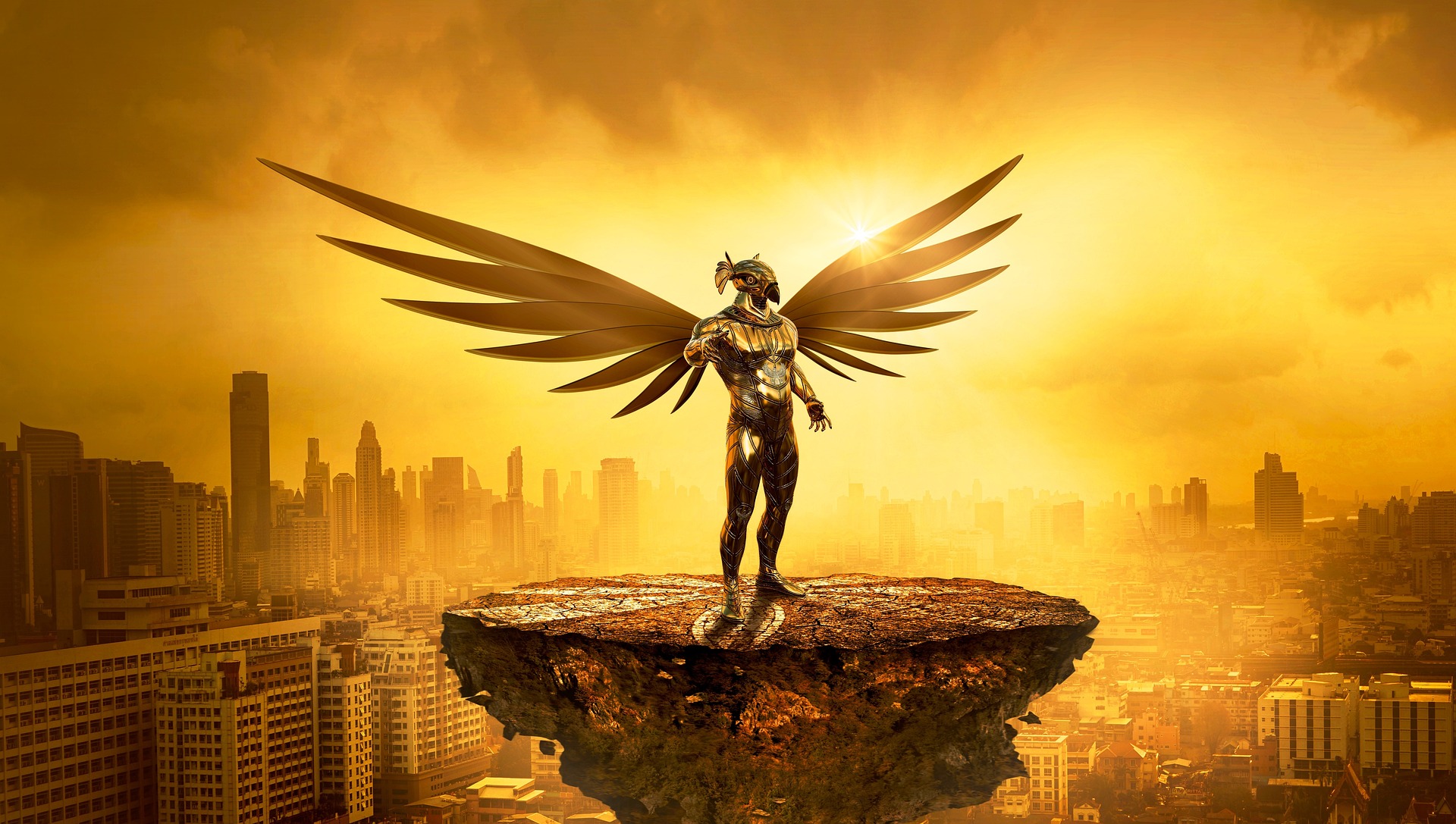
When you can reason, the thinking function and the feeling function are compatible and bring you to a place of harmony. The balance between heart and mind, therefore, enables you to make better decisions. [13]
The Stoic Marcus Aurelius makes reference to the need to reason over the needs of the body.
“Whatsoever I am, is either flesh, or life, or that which we commonly call the mistress and overruling to part of man; reason. Away with thy books, suffer not thy mind any more to be distracted, and carried to and fro; for it will not be; but as even now ready to die, think little of thy flesh: blood, bones, and a skin.” [14]
~ The Golden Book of Marcus Aurelius
Jung concluded that the highest function in humans is found in the extraverted sensation type. This personality type is able to relate to the external environment in a concrete way.
And because sensation is the means by which mankind experiences the fullness of life, you experience more joy.
However, when the sensation function is too excessive, which can be the case with extroverts, you don’t make the best use of your experiences. In the absence of internal processing and rational thinking, which are introverted traits, compulsive behaviours rising from the unconscious can overcome extraverted types.
Jung noted that when sensation predominates, rational judgement is non-existent and the more unsatisfied and chaotic the life of the extravert becomes.
“Either he develops into a crude pleasure-seeker or he becomes an unscrupulous, designing sybarite (self-indulgent, fondness for luxury.” [15]
~ Carl Jung, CW6, Psychological Types
The measure of extraverted tendencies in the conscious personality often reveals itself in the degree of infantilism surfacing from the unconscious as a complex (an archetype).
The extent of an individual’s behaviours and attitudes is determined by their most dominant archetypes. This can vary from an addictive nature, arrogance, manipulation or outright wickedness.
How unconscious content surfaces in the conscious personality is dependent on the parts of the personality that are repressed, suppressed or ignored.
Repressed content still holds a store of energy. The more often the same energy is repressed the more strength is accrued by the instincts, and will eventually rise up and take possession of the ego.
Sigmund Freud noted that repression creates resistance between the conscious ego and the unconscious (Self). Georg Groddeck put it best when he noted that we are “lived” by unknown and uncontrollable forces.
“…these trends which have been shut out stand in opposition to the ego and the analysis is faced with the task of removing the resistances which the ego displays against concerning itself with the repressed. [16]
~ Sigmund Freud, The Ego and the Id
It is by observing patterns of “lived” forces in correlation to incidents that trigger a specific behaviour that you identify the subconscious libido that is opposed to the ego.
Extraverted individuals who are cut off from the Self because they neglect the inner world are more prone to addictions and complexes. Complexes become neuroses, and then diseases.
“….the claims of the unconscious force themselves categorically upon consciousness, thus creating a calamitous cleavage which generally reveals itself into ways: either the subject no longer knows what he really wants and nothing any longer interest him, or he wants too much at once and has to keen on interest – but in impossible things. The suppression of infantile and primitive claims, which is often necessary on “civilised” grounds, easily leads to neurosis or to the misuse of narcotics such as alcohol, morphine, cocaine, etc. In more extreme cases the cleavage ends in suicide.” [17]
~ Carl Jung, CW6, Psychological Types
For the purpose of balance, it’s worth pointing out that one-sided introverts are not immune to illness. However, the type of illness that emerges from excessive introversion tends to be a disintegration of mental processes; dementia, psychosis and sociopathy.
Either way, whenever there is an imbalance in favour of one side or the other, unconscious content comes to light which can be seen in archetypal patterns.
In the extraverted personality, the intellect stands again in opposition to the instinct and attempts further repression. Jung noted that the outcome of this is usually a collapse of the conscious attitude which is replaced by a neurosis. [18]
Repressed consciousness reaches the surface in the form of eruptions, often as an obsessive nature, a depreciation of character, negative thinking, infantile prejudice and projecting onto others — often the people you love the most; partner, children. [19]

Hysteria, in Jung’s view, was the most common neurosis associated with the extroverted type. Making a drama out of inconsequential things is out of sync with acceptable behaviours and attitudes associated with rational and internally organised individuals.
Jung also noted that:
“…the hysterical character is an exaggeration of the normal attitude; it is then complicated by compensatory reactions from the side of the unconscious, which manifests its opposition to the extravagant extroversion in the form of physical disorders, whereupon an introversion of psychic energy becomes unavoidable. [20]
~ Carl Jung, CW6, Psychological Types
Mainstream psychology shows us quite clearly that extroversion offers numerous benefits to your self-esteem, self-confidence and happiness. Without extroverted tendencies, you deny yourself opportunities in life and neglect to develop your ego which can dent your confidence and self-esteem.
However, as we have shown above, there is more than one side of the story to extroversion. And that side of the story is rarely told through mainstream sources. Western culture, in particularly, wants to push the idea that extroversion is the best personality type.
And that is clearly a half-truth. The best personality type is the ambivert, a balanced combination of extroversion and introversion. There are no statistics on this, but empirical evidence would suggest that introverted individuals are more likely to develop extroverted tendencies than extroverted individuals are likely to adopt introversion — perhaps until disaster strikes.
The goal of Self-Development is literally to develop the Self — or what Jung described as the “inner man” — the atman of the Hindus. When the Self-ego axis is developed and the opposing forces are in harmony with one another, you have access to inner and outer reality and are able to coordinate the two effectively.
This is also how you develop concrete self-esteem (as opposed to the external-facing self-esteem associated with arrogance and narcissism), self-confidence, and meaningful relationships etc.
“Through the fusion of the Self with the relations to the object there proceeds the identity of the Self (Atman) with the essence of the world (i.e. with the relations of the subject to the object,) so that the identity of the inner with the outer Atman becomes recognized.” [21]
~ Carl Jung, CW6, Psychological Types
Connecting with the Self makes you less needy and lonely. You come to recognise that the inner peace and innate love radiating from within is all you need to feel content and satisfied.
One-sided extroverts rarely feel a sense of satisfaction that has any true meaning or value. When you’re unable to control the “liking system” in your neural circuitry, you constantly search for instant gratification.
Like Tantalus, a self-serving character in Greek mythology, the inability to give in to temptation is why you never truly feel satisfied.

To overcome restlessness and constant cravings, Master Mind Content recommend our extroverted (and addictive) clients practice gratitude. This helps you to focus on recognising that what you have is enough and curbs your enthusiasm for excessively seeking pleasure in the moment.
Instead, you refocus your attention towards long-term goals and take actions that align with your ambition. You will have to make small sacrifices that may feel like a big deal at first, but you soon come to realise, that the superficial gratification you craved isn’t actually what you need to feel fulfilled.
Obsessive behaviour is an opposing force to the feeling of gratitude. Frontier sciences show that gratitude is a character trait that calms the nervous system and changes your biology. [22]
Gratitude helps you to experience contentment and satisfaction. Obsessive behaviour keeps you trapped in a vicious cycle of need, restlessness and pleasure-seeking.
When you have an imbalanced tendency towards extroversion, your constant need for stimulation binds you to objects, jealous fantasies and anxiety states. More acute cases develop every sort of phobia, and unconscious content emerges. [23]
The potential downsides of extroversion are, of course, not inherent flaws but challenges that can be managed with self-awareness and self-development.
Extroverts can learn to find the right balance between social engagement and personal time, practice mindfulness to avoid overstimulation, take time to engage in contemplation and reasoning, and look at life from the perspective of the person they are talking to. This helps you to develop empathy and compassion and forge meaningful relationships.
“Endowed with the ability to be self-reflective, the self-conscious mind is extremely powerful. It can observe any programmed behaviour we are engaged in, evaluate the behaviour, and consciously decide to change the program. We can actively choose how to respond to most environmental signals and whether we even want to respond at all. The conscious mind’s capacity to override the subconscious mind’s preprogrammed behaviours is the foundation of free will.” [24]
~ Bruce Lipton, Biology of Belief
While studies and mass media highlight the benefits of extroversion, these advantages may be at least partially due to other related factors; specifically, self-esteem and meaningful relationships.
It’s important to recognise there are positive and negative aspects to both extroversion and introversion. The keys are self-acceptance, gratitude and internalising your thoughts and feelings.
Once you ignore the idiocy of extroversion bias and recognise the value of adopting ambivert behaviours, you will establish genuine self-esteem and forge deep meaningful relationships that give you more joy, satisfaction and harmony.
[1] Carl Jung, CW6, Psychological Types, p.186, (1923)
[2] Carl Jung, CW9 Part 1, The Archetypes and the Collective Unconscious, para 521, 2nd ed (1968)
[3] Why Extroverts Are So Needy, S. Dembling (2013)
[4] Carl Jung, CW6, Psychological Types, p.188 (1923)
[5] Lawn, R. B., Slemp, G. R., & Vella-Brodrick, D. A. (2018). Quiet flourishing: The authenticity and well-being of trait introverts living in the west depends on extraversion-deficit beliefs. Journal of Happiness Studies, 20(7), 2055–2075. https://doi.org/10.1007/s10902-018-0037-5
[6] Rivera, L. A. (2012). Hiring as cultural matching. American Sociological Review, 77(6), 999–1022. https://doi.org/10.1177/0003122412463213
[7] Pavot, W., Diener, E., & Fujita, F. (1990). Extraversion and happiness. Personality and Individual Differences, 11(12), 1299–1306. https://doi.org/10.1016/0191-8869(90)90157-m
[8] Tan, C.-S., Krishnan, S. A. P., & Lee, Q.-W. (2016). The role of self-esteem and social support in the relationship between extraversion and happiness: A serial mediation model. Current Psychology, 36(3), 556–564. https://doi.org/10.1007/s12144-016-9444-0
[9] Saphire-Bernstein, S., & Taylor, S. E. (2013). Close relationships and happiness. Oxford Handbooks Online. https://doi.org/10.1093/oxfordhb/9780199557257.013.0060
[10] Martela, F., & Ryan, R. M. (2016). Prosocial behavior increases well-being and vitality even without contact with the beneficiary: Causal and behavioral evidence. Motivation and Emotion, 40(3), 351–357. https://doi.org/10.1007/s11031-016-9552-z
[11] Vaughan-Johnston, T. I., MacGregor, K. E., Fabrigar, L. R., Evraire, L. E., & Wasylkiw, L. (2020). Extraversion as a moderator of the efficacy of self-esteem maintenance strategies. Personality and Social Psychology Bulletin, 47(1), 131–145. https://doi.org/10.1177/0146167220921713
[12] Carl Jung, CW6, Psychological Types, p.453 (1923)
[13] [Carl Jung, CW6, Psychological Types, p.45 (1923)
[14] The Golden Book of Marcus Aurelius, p.10 para 16 c. 170AD
[15] Carl Jung, CW6, Psychological Types, p.460 (1923)
[16] Sigmund Freud, The Ego and the Id, p.7 Kindle Loc 93 (1923)
[17] Carl Jung, CW6, Psychological Types, p.425, (1923)
[18] Ibid, p.424
[19] Ibid, p.425
[20] Ibid p.421
[21] Ibid p.149
[22] Kyeong S, Kim J, Kim DJ, Kim HE, Kim JJ. Effects of gratitude meditation on neural network functional connectivity and brain-heart coupling. Sci Rep. 2017 Jul 11;7(1):5058. doi: 10.1038/s41598-017-05520-9. PMID: 28698643; PMCID: PMC5506019.
[23] Carl Jung, CW6, Psychological Types, p.460, (1923)
[24] Bruce Lipton, Biology of Belief, Kindle Loc 2281 (2005)
Unless you know the hidden meaning of the esoteric symbols that reveal a deeper meaning to world mythology, symbolism is a somewhat blunter self-development tool.
And that brings me to the focus of this article; I want to explain the important difference between esoteric symbolism vs exoteric symbolism. Knowing the difference can make a huge difference in how you interpret the meaning and apply it to your life.
If you’re pressed for time, watch the video below (and please subscribe to my YouTube channel for more free insights into the differences between esoteric symbolism vs exoteric symbolism.
Esoteric meanings are available in the public domain but they are scattered around in multiple sources and take years to piece together. Moreover, alchemical books typically use symbolism to explain the symbolism, thus they don’t reveal the whole Truth.
Let me give you an example using the passage below:
“The life of mercury is nothing else but the internal heat, and external coldness, i.e. it makes the internal part of its body hot and the outward part cold, and therefore might be compared to a garment made of skins.”
~ Michael Sendivogius, Of The Nature Of Things
Well, good luck making sense of that!
To understand the explanation above, firstly you need to understand the esoteric meaning of mercury, hot and cold in alchemical symbolism.
Mercury – also known as quicksilver – relates to how you apply your mind or the “world of the psyche”. It refers to how you use intelligence and your personal aptitude to do “the work”.
“Heat is electrical energy and corresponds with the left side of the brain (analytical thinking, logic,) and magnetic energy corresponds with the right side of the brain (creative, imagination)…
~ Dr A. S. Raleigh Hermetic Science of Motion and Number
The dividing line between heat and cold is, therefore, the point at which electric impulses become magnetism. Magnetism is the bonding process, the vibrations of energy that connect the inner world with outer experience. Magnetism is determined by thoughts, emotions and actions and vibrations are influenced by whether you operate from a positive, love-based centre or a negative, fear-based centre.
Decoding esoteric wisdom is like an Ikea wardrobe. You have to unpack it and assemble the pieces by following the images and instructions.
I’ve been piecing the snippets of esoteric wisdom together since 2012. Because of the amount of exoteric symbolism available in the public domain, my initiation into symbolism was a slow start. What I mostly found was YouTube videos connecting religious symbolism to the movement of the planets.

Whilst this information was all very interesting, the explanations didn’t quite fit right. I couldn’t fathom why ancient builders had gone to so much effort to build cosmology into their settlements and architectural structures simply to acknowledge the movement of the planets.
As it turns out, the planets and cosmology theories are merely a smokescreen you have to go beyond to find a deeper meaning. You’ll find that mainstream astrology is not esoteric either. And I’m not talking about the horoscopes you find in the newspaper, I’m talking about astrologers who draft birth charts and offer “predictions” for your life.
It has to be said, that these predictions can have their benefits – but only if you believe the predictions to be true and apply the appropriate actions. Predictions, therefore, become self-fulfilling prophecies.
Relating symbolism to the movement of the planets and stars also raised another question. If our ancient ancestors were knowledgeable enough to understand outer space and have the mathematical and technical skills to accurately align temples with constellations, what else did they know?
I was convinced that world symbolism had a far greater importance than mapping the heavens. I asked myself, what is most important to mankind?
As I meditated on this question, my epiphany came.
Mind.
And this is another difference between esoteric symbolism vs exoteric symbolism. The latter doesn’t typically delve deep enough into the true meanings. In esoteric symbolism, there is symbolism behind the exoteric symbolism. Esoteric symbolism means hidden.
Once I realised the relationship between esoteric symbolism vs exoteric symbolism and related this to myth and the human psyche, the secrets of esoteric wisdom started to be revealed to me. I was eventually able to work out the esoteric meanings by using the exoteric interpretations.
But only once relevant information had come to my conscious awareness. During my research I was consistently guided to what I needed to know next. But because I took on information, and then asked, okay but what happens next. What or why is such and such?
I was guided to the likes of Carl Jung, Manly P. Hall, Israel Regadie, Edward Edinger and Marie-Louise von Franz, Rupert Sheldrake, Sebastian Grof and many others, all of which enabled me to imagine the relationships between out inner world and the external world.
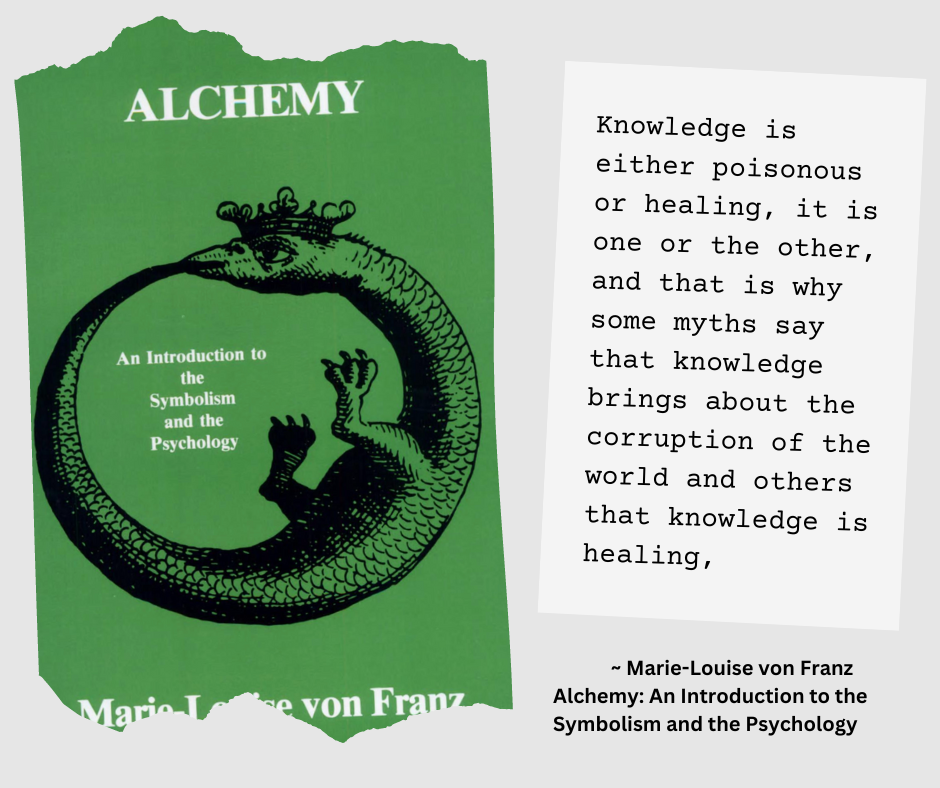
Once I was on the right path and learned to observe the differences between esoteric symbolism vs exoteric symbolism and used the information to my advantage. I discovered that frontier sciences help to reveal a deeper meaning of mythology. Not only psychology but neurobiology, quantum physics, epigenetics, physiology, systems theory and various bits of scientific exploration of consciousness.
So just a bit of light reading.
By collecting all the pieces, I was able to develop a powerful self-development tool you can use to transform your life. Understanding the esoteric meaning of symbols and numbers can play a massive role in your decision-making, relationships, career, emotional well-being, state of mind and more.
That said, adopting eSoteric symbolism as a self-development tool comes with a caveat:
Be careful not to get sucked into the eXoteric meaning of symbols.
To understand why you need to know the difference between esoteric symbolism vs exoteric symbolism, just look at the definitions for the words given by various dictionaries.
The official definition of exoteric in the Cambridge Dictionary is that it is: “intended or suitable for people generally, not only for some people”.
The Merriam-Webster dictionary provides a two-tier response: (1) “suitable to be imparted to the public” and (2) “belonging to the outer or less initiate circle.”
In other words, the general public is considered the outer or less initiated member of society and are not privy to the secrets hidden behind esoteric symbolism.
Wikipedia (don’t laugh) actually gives a pretty good summing up of the difference between esoteric symbolism and exoteric symbolism.
“The word [exoteric] is derived from the comparative form of Greek ἔξω eksô, “from, out of, outside”. It signifies anything which is public, without limits, or universal. It is distinguished from internal esoteric knowledge. “Exoteric” relates to external reality as opposed to a person’s thoughts or feelings. It is the knowledge that is public as opposed to secret or cabalistic. It is not required that exoteric knowledge come easily or automatically, but it should be referenceable or reproducible.”
So you can see from the definition that the meaning of exoteric symbolism should offer just enough value to make it sound believable, but the real meaning is hidden.
And when you recognise there is a subtle difference between esoteric symbolism vs exoteric symbolism this is precisely what you find!
Whilst the meanings given for exoteric symbolism are not wrong, they are misleading.
And that is why you need to know the difference between esoteric symbolism vs exoteric symbolism.
Earlier investigators also noted this distinction: The esoteric astrologer and theosophist, Alan Leo writes:
“…the main difference between Esoteric and Exoteric Astrology, [is that] the former is concerned with man’s actions within and with the power to harmonise himself with nature’s laws, and the latter with man’s impulses prompted by the attraction that are without;”
~ Alan Leo, Esoteric Astrology
So what does Leo mean with regard to actions within and attractions without?
Esoteric symbolism describes which energies you are projecting from within – your inner world – into the outside world. This projection is how you create your experiences of life.
If you apply esoteric symbolism, you can identify these archetypal energies that are influencing your energies and thus your decision-making, and thus your experiences. Esoteric symbolism guides you to resolve problems that arise in your life. It brings unconscious content into the light of the conscious mind and prompts you to make relevant changes that integrate unexpressed aspects of your personality and improve your life.
By Without, Leo means exoteric symbolism focuses on the outside world. For example, a symbol will give you an idea of how you can fix a problem you are experiencing in your life, or maybe give you confidence ahead of a new job or relationship. You literally take the generic advice of somebody from the external world rather than applying the meaning of the symbol to yourself at that precise moment.
Can this approach work?
Of course, it can. But unless you look at the patterns of energy you are projecting and observe the emergent archetype that is influencing your experiences, there is more scope for making a wrong decision. Exoteric interpretations are more of a lottery.
So let me give a typical example of an exoteric statement that you will typically find in astrology – it’s this type of description that Alan Leo says directs your attention to the material world:
“Libra is the sign of relationships and therefore represents both the deeper and material aspects of our most intimate relationships. It is about the things that are shared with others such as resources, assets, money, and values.”
This description prompts you to look at your relationships with the external world; resources, assets, money, and values you share with others. But from an esoteric standpoint, Libra relates to the harmony between the self and the ego. There is a need to have the right relationship with oneself, which also involves how you treat yourself, how you talk to yourself and how you respect yourself.
The archetypes I associate with Libra are the Creator (character building), Caretaker (self-respect), Lover (self-restraint and forging healthy bonds with the external world) and the Trickster (ego development or getting caught in the traps of illusion).
The other issue with exoteric interpretation is that you can become fixated on an issue that is happening to you on this one occasion. But until you transform your subconscious program, you will continue to have similar issues. Because until you fully transform a particular energy, the remnants of information the energy stores continue to influence your life. The only way to totally transform the energy that has roots in a fear-based centre is to be aware of its existence and the experiences it causes in your life.
Unless you adapt your behaviours, attitudes, beliefs, perceptions or whatever it is you need to change, you will continue to encounter problematic situations. Wisdom frees you from challenges.
Wisdom is the key difference between esoteric symbolism vs exoteric symbolism.
Let me give you an analogy. If you only have a few pieces of the jigsaw, do you see the whole picture?
No, you don’t.
If you’ve read any websites that promulgate exoteric interpretations of symbols – such as angel numbers and Christian websites – you will probably intuitively feel they are watered down. You will certainly find that they offer potential situations you might be experiencing.
Whilst these guesses may occasionally resonate with you, the writer is actually clutching at straws. The suggestions won’t resonate with everybody so don’t be surprised to find that sometimes you find answers that are relevant to you and sometime you don’t.
But let’s be fair. Exoteric symbolism does give you something to work with. But when they provide many options, you’re none the wiser. You’re left guessing what a particular symbol could possibly mean for you.
Exoteric interpretations of symbols are not useful when you’re searching for answers. Moreover, there’s a good chance, they’ll send you down the wrong path because most of us lean towards the most positive meaning and grab hold of that.
You may ask why the general public is given misleading information. I’m sure you can smell a conspiracy theory brewing here and you don’t believe in all that secret society nonsense.
Yet it only takes a little research to learn that secret societies have levels known as degrees. When you’re deemed ready to move up to the next degree, you’re exposed to more information which takes you deeper in your understanding.
The same is true of the education system which you (aspirationally) earn a degree.
Moreover, symbolism pops up all over the place; films, pop music videos, Disney, political campaigns, sports events, corporate logos etc.
Why?
Because it has a meaning. Sigmund Freud and Carl Jung believed the unconscious communities to us using a language of symbolic images in an attempt to bring unconscious content into the light of the conscious mind.
“How the harmonising of conscious and unconscious data is to be undertaken cannot be indicated in the form of a recipe. It is an irrational life-process which expresses itself in definite symbols. In this case, knowledge of the symbols in indispensable, for it is in them that the union of conscious and unconscious contents is consummated.Out of this union emerge new situation and new conscious attitudes.”
~ Carl Jung, CW9 Part 1, The Archetypes and the Collective Unconscious, 2nd ed (1968)
The truth of the matter is that the “inner circle” – the descendants of the families that became rulers in the distant past – can only live a lavish lifestyle if the rest of us pay for it. So they have to control us which they do by filtering down misleading information.
Again this sounds like a conspiracy theory but if you listen to qualified professionals in the fields and medicine, nutrition, psychology and various sciences, the majority of them claim what they are taught in institutional education is wrong and the messages being pushed is old dogma that most scholars are too blind to see.
For example:
“The idea that genes control biology is a supposition, which has never been proven and, in fact, has been undermined by the latest scientific research Kindle.”
~ Bruce Lipton, Biology of Belief
“It is now clear that these ancient practices (to induce non-ordinary states of consciousness) were neither pathological phenomena nor the product of primitive superstition; rather, they were legitimate and highly sophisticated spiritual practices that acknowledged and paid homage to a much broader view of consciousness that has been held by those who adhere to the Newtonian-Cartesian model of reality.”
~ Stanislav Grof, The Holotropic Universe
“The generally accepted models of reality, often called paradigms, embody assumptions that are more or less taken for granted and which easily become habitual”.
~ Rupert Sheldrake, The Presence of the Past
“The dishonest biological excuses for our behaviour [should] be exposed for the lies they are.”
~ Jeremy Griffith, Freedom: The End of the Human Condition
Frontier sciences and independent researchers are busting conventional wisdom pushed through educational institutions, industry journals and media outlets all the time. What we see in these drip-down systems is the same principle as esoteric symbolism vs exoteric symbolism.
So if you want to use symbolism to help you make decisions with confidence, learn the information that esoteric symbolism reveals; the psychobiological system and our energetic connection to the universe.
This is why it’s important to have some understanding of psychology, epigenetics, neuroscience, quantum physics and consciousness. Fortunately, you don’t have to research all these things. I’ve done that for you and explain what you need to know in the Beginner’s Guide To Symbolism.

If modern man understood how consciousness works, we would all be enlightened, self-governing and harmonious. Without the need for authority and structure, the rulers would not have any power or control over us. Nor would they have an abundance of wealth.
Anyway, enough of that drivel, let’s crack on and take a look at some examples that highlight the difference between esoteric symbolism and exoteric symbolism.
In this coming section, I’ve listed some examples of how esoteric wisdom differs from exoteric symbolism.
I could use a number of examples here, but I chose to explain the symbolic meaning of dolphins because dolphins have quite a varied list of references which demonstrates how many of them tie. It’s also a good example to illustrate how a little bit of abstract thinking enables you to fathom how ancient sages developed their ingenious systems of esoteric symbolism vs exoteric symbolism.
We learn from exoteric sources that the symbolic meaning of dolphins relates to guidance, protection, peace, prosperity, communication, intelligence, freedom, romance, transformation (death and rebirth), and psychic abilities.
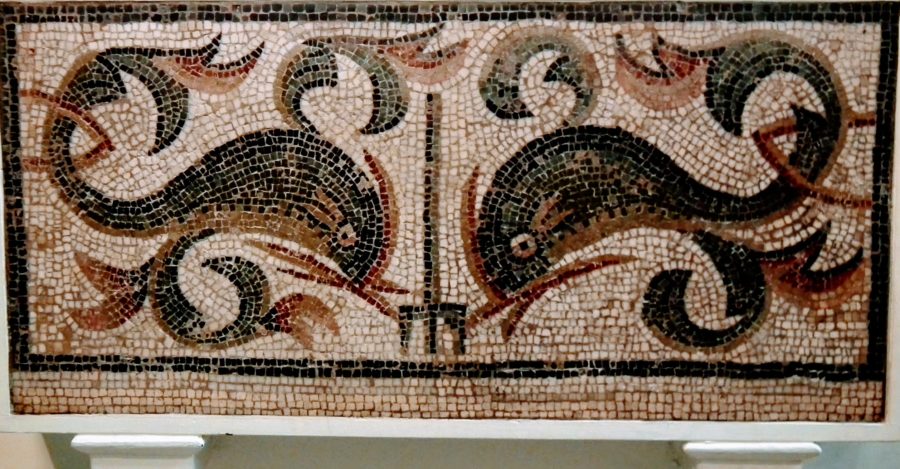
So let’s take a look at the hidden meaning behind these taglines versus the definition promulgated by “authorities” (i.e religions, scholars, and other so-called experts).
We’ll start with romance and communication. Although the exoteric interpretation would have you believe that romance and communication are different, they basically allude to the same thing in esoteric symbolism; the uniting of unconscious content with the conscious mind. The so-called alchemical wedding.
When you see an exoteric source mention “communication” it’s usually in relation to an animal or plant that can transcend water and land and survive in either.
Water, particularly the sea, is a universal symbol for the “unconscious” but actually relates to subconscious program. All rivers that flow from the mountain — the Self — flow into the sea. Earth is analogous to physical reality. So what creates your experiences of reality?
Romance and communication?
Noooo, they are merely external factors that you have to engage with and manage.
Subconscious programs create your reality because they prompt how you think, feel and act.
“Your subconscious mind behaves to the nature of your thoughts. You think with your conscious mind, and whatever you habitually think sinks down into your subconscious mind, which then creates according to the nature of your thoughts. Your subconscious mind is the seat of your emotions. It is the creative mind.”
~ Joseph Murphy, The Power of Your Subconscious Mind
To fully understand esoteric wisdom, you also need to know the difference between the subconscious and the unconscious mind. Although they are generally treated as the same entity, they perform different functions.
I explain this in more depth in the Beginner’s Guide To Esoteric Symbolism, the Essential Self Development Program and several accompanying articles in the VIP Members Area.
But for the purpose of this article, I will tell you that the “subconscious” could otherwise be called the habitual mind. The unconscious is where “unlived” aspects of your personality reside; what we are calling at Master Mind Content, the Superconscious.
In Greek mythology, Hermes is associated with communication because he is the only Olympian who freely traverses the three worlds. Hermes is known as ‘the messenger of the gods’ because he accompanies souls to and from the Underworld and delivers messages sent by various gods.
In other words, Hermes is the carrier of information as expressed by his symbol the Caduceus; the symbolic representation of ida and pingala travelling up and down the spine.

When you see an exoteric source referencing “romance” you could be led to believe that you’re going to find love in your life or reignite passion in your existing relationship. Because that’s what most people want to hear, that’s what you will probably believe.
It may be true for some people on a handful of occasions. But there are loads of symbols that relate to romance that you will see regularly. So in general, to reference an actual love interest is a sweeping statement that won’t apply to everybody all of the time – which makes it a misleading statement and will probably not bring you to the point of understanding you need.
I’ll say it again, exoteric symbolism is misleading. Learn the difference between esoteric symbolism vs exoteric symbolism.
As a result of such misleading information, anybody dipping their toes into the sea of symbolism gives up because they are led to believe it’s a load of old cobblers (British slang for nonsense).
The symbolism courses at Master Mind Content reveal the deeper meanings hidden behind esoteric symbolism so that you can genuinely use the synchronicity of symbols and numbers in mythology to work for you on a deeper level.
That’s not to say that esoteric symbolism reveals the Truth immediately all the time either. Sometimes information comes to us in dribs and drabs, so don’t let me mislead you either.
But because esoteric symbolism prompts you to examine your thoughts, actions and emotions and directly relate them to your current experience, you are at least treading the right path. When you’re on the right path, you will come across the various signposts you need to reach your destination (of self-realisation). So at least head off in the right direction.
As you learn more about the difference between esoteric symbolism vs exoteric symbolism and how they relate to you, it becomes easier to identify the missing aspect of your personality that is trying to make itself unknown.
To help you do this, I have compiled a list of archetypes which reveal the patterns of human nature and have assigned each archetype to the Olympian gods of Greek mythology. The gods all have a significant meaning which can help you to evolve faster.
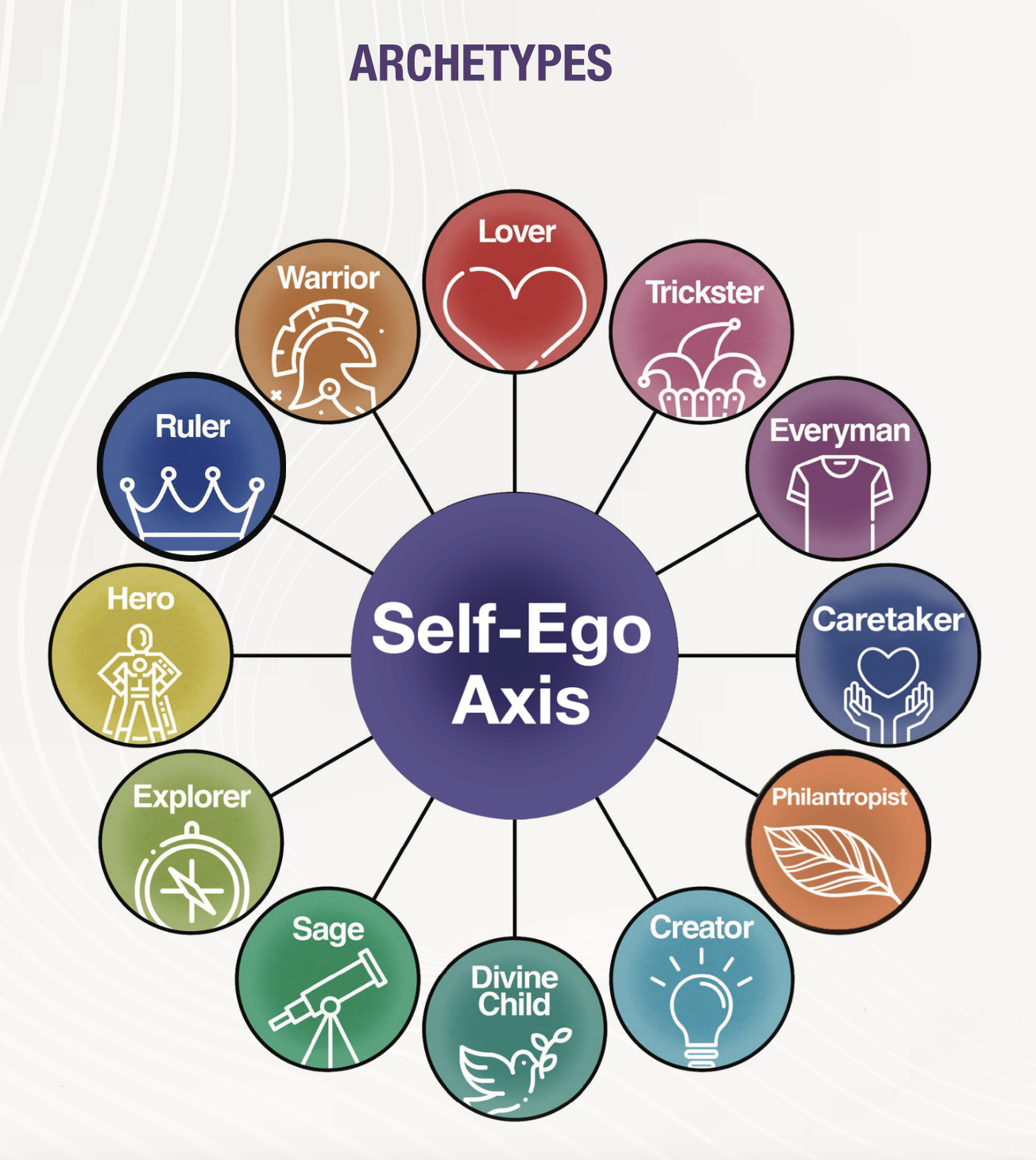
There will also be times when you have to piece several symbols together before the entire Truth is revealed. And sometimes it can take several weeks or months before you reach the point of self-realisation. Other times it will take days and when you are proficient, your understanding will be instantaneous.
But getting there, in the end, is better than not getting there at all. And unless you know the difference between esoteric symbolism vs exoteric symbolism, the chances are that individuation will take even longer.
Let’s take a look.
We are told by exoteric sources that dolphins are a symbol of transformation. The general conclusion is that when dolphins appear to you in dreams, or through synchronicity, you have the capacity to transform your life.
This is true, and whilst this snippet of advice may motivate you to look at changing your way of being, you’re not given much guidance about how to actually transform your life.
What action should you take? What thoughts or information should you acquire?
Without insight and guidance, you could go in the wrong direction and waste a lot of time. If you know how to seek guidance from your inner wisdom, on the other hand, you will be provided with more information that guides you in the right direction. Inner wisdom gives you the opportunity to transform emerging energy into your concrete personality.

Information and self-knowledge are the domain of the Greek sun god Apollo – and one of his symbols is the dolphin. If you’re inquisitive, you may wonder why a creature of the sea is associated with a sun god, a feature of the sky.
Well, that’s because, dolphins are recognised for their intelligence and have a built-in sonar system that enables them to communicate and navigate. So do humans. It’s called the Superconscious, or Higher Self. Ph yeah, and god. But by whatever name you want to call it, just listen to it.
Thought-Provoking Quote
“The task confronting the patient or the student is to differentiate the elements of his own personal unconscious from the primordial archetypes or dominants of the collective unconscious, to enable the psychical energy to well up, activating and vitalising the faculties and powers of consciousness itself.”
~ Israel Regardie: The Philosopher’s Stone
What’s more, you may find it strange that the dolphin is often depicted with a trident or a cross in Christian traditions – a motif reflecting the crucifixion and purity of Christ. [Transformation, death and rebirth] Christ is a symbol of self-knowledge; an enlightened man.
With self-knowledge, you have information that enables you to change your habits and thus transform your life. A transformational process in self-development involves the transformation of energy.
Here, we also see the idea of the alchemists, Chymical Wedding – the union of the conscious mind (man) and unconscious content (woman).
In exoteric explanations of the Alchemical Marriage you will usually find references to the sun (conscious awareness) and the moon (unconscious content) and explanations of the symbolism expressing the harmony between the masculine and feminine aspects of your personality.
This is partly true, but these sources very rarely mention the union of unconscious content with the conscious mind. You can read a typical rendering of the alchemical wedding here.
In the medieval image below, you see the union of the sun and moon. The masculine sun is the ‘light’ of conscious awareness that the ego associates with. Self-knowledge is illumination or en-light-enment.

The moon can only be seen in the night sky because the light of the sun reflects on its surface. Thus unconscious content that is invisible during the day when the light of the conscious mind is blocking it becomes visible when you look into the darkness of the unconscious mind.
The unconscious is related to the darkness because you don’t see.
In Greek mythology, Artemis, who is often depicted with the crescent moon motif, gives birth to her brother Apollo, the sun god who represents self-knowledge. Master Mind Content associates Artemis with the Hero archetype and the Explorer, both of which help to enhance conscious awareness.

Carl Jung has Artemis down as an anima figure, a feminine energy in men that is usually projected onto women. The anima can have a negative effect on a man which Jung describes as “moody, irritable, depressed moods, uncertainty, insecurity, and touchiness.” (Carl Jung, Man And His Symbols)
“The anima, which is a personal demon expressing itself in thoroughly personal moods (therefore animosity!).
Carl Jung, Commentary on The Secret of the Golden Flower
It is when you are in a negative frame of mind, restless or expressing your “demonic” side that can help you to identify the source of your displeasure and begin the healing process. Demons are the complexes that create problems in your life, split off aspects of your personality that are trying to make themselves known. Complexes can be identified through archetypal patterns of thoughts, feelings and behaviours.
Another example of dolphin symbolism in Greek mythology belongs to Poseidon who sends the intelligent mammal to his beloved Amphitrite and persuades her to be his bride. Here we see how romance and communication we mentioned above are again related to the dolphin, but the dolphin’s mission on behalf of Poseidon was to change Amphitite’s mind; to transform her way of thinking.
Poseidon represents the Philanthropist archetype. As god of the sea, the “earth-shaker” has the capacity to destroy old habits, attitudes, beliefs and everything else that creates your illusion of the world etc. You do this by changing the contents of your thoughts and your view of the world.
By destroying old paradigms and patterns of behaviour that do not serve you, new ways of being can be cultivated. You plant the seeds in your subconscious (the Earth) with your conscious mind and nurture them with water.
The subconscious mind is enriched by integrating repressed consciousness buried in the unconscious. but before you can integrate unconscious content into the subconscious, it has to be made available and accepted by the conscious mind. Just as a woman has to accept the proposal of a man (or god) dolphin or no dolphin.
Since dolphins live in the sea but rise to the surface, ancient writers associated them with unconscious content emerging to the surface of the conscious mind. When self-knowledge rises to the surface you have the opportunity to reprogram your subconscious.
By associating patterns of behaviour with specific archetypes, you can determine which archetypes are dominant in you, which need deflating and which need developing.
I am working on a book and a self-development course that describes archetypes in detail. There is also an archetypes tool available in the Essential Self-Development program which you can access from here.
When you acquire new knowledge about yourself, you are in a position in which you can transform your life. Such a transformation can liberate your mind from the bonds of ignorance – which is why dolphins are associated with freedom.
In a South American myth, a half man half dolphin figure impregnates young girls. In symbolism, the male principle is the mind and young women are the subconscious – an unripe store of consciousness that is not yet fully matured with wisdom.
The mind, you could say, impregnates the subconscious with information, knowledge, and intelligence. Your subconscious responds to what you tell it.
“Psychologists and psychiatrists point out that when thoughts are conveyed to your subconscious mind, impressions are made in the brain cells. Working by association of ideas, it uses every bit of knowledge that you have gathered in your lifetime to bring about its purpose. It draws on the infinite power, energy, and wisdom within you.” ~ Joseph Murphy, The Power of Your Subconscious Mind
Whereas Apollo represents self-awareness; self-knowledge rising from the Superconscious to the surface of the conscious mind, you might find this phenomenon described as dolphins moving between the supernatural world (water) and the natural world (earth).
Except that would be wrong, because water is related to the subconscious mind not the superconscious. However, information does communicate from the subconscious mind to the conscious mind around 90% of the time. These are your habitual programs.
So it’s interesting to note that the dolphin is also associated with the Greek goddess Aphrodite who is synonymous with the Lover archetype. The wounded Lover is an addict, fuelled by the subconscious programs that seek self-gratification in the external world.
In other words, subconscious programs keep us bound to attachments the ego associates with as survival mechanisms. They keep you trapped in your comfort bubble going round in habitual circles. Meanwhile, Superconscious content remains repressed.
Carl Jung pointed out that by integrating unconscious content into the conscious mind we become whole, fertile and complete. It is unconscious energies, surfacing from the Superconscious, which Jung called archetypes.
The archetypes help to guide us towards the discovery of our True Self by observing instincts that take on a life of their own.
Thought-Provoking Quote
“Instincts are not vague and indefinite by nature, but are specifically formed motive forces which, long before there is any consciousness, and in spite of any degree of consciousness later on, pursue their inherent goals. Consequently, they form very close analogies to the archetypes, so close, in fact, that there is good reason for supposing that the archetypes are the unconscious images of the instincts themselves, in other words, that they are patterns of instinctual behaviour.”
~ Carl Jung, The Archetypes and the Collective Unconscious
Unfortunately, esoteric definitions are hard to come by in the public domain. They are available but there is no one complete body of work (at least not that I have found) that explains the meaning of esoteric symbolism sufficiently.
Consequently, you must consume multiple sources and piece the information together little by little. This naturally takes a lot of time. In addition, the hidden meaning of symbols in alchemical literature needs to be decoded.
In the Beginners Guide To Symbolism – which you can purchase from our website on the link below – I illustrate the differences between esoteric symbolism vs exoteric symbolism using the examples of the serpent (eSoteric) and the X (eXoteric), also known as the tumbling cross.
The Beginner’s Guide to Symbolism goes into more depth about how the mind-body-energy connection works. It is a critical starting point for understanding how to use esoteric symbolism as a self-development tool.
It’s also important to know both the negative and the positive aspects of a symbol in order to apply it to your life. Taking the positive meaning every time will not serve you in the quest for wholeness. As a matter of fact, it will hinder you and hold you back.